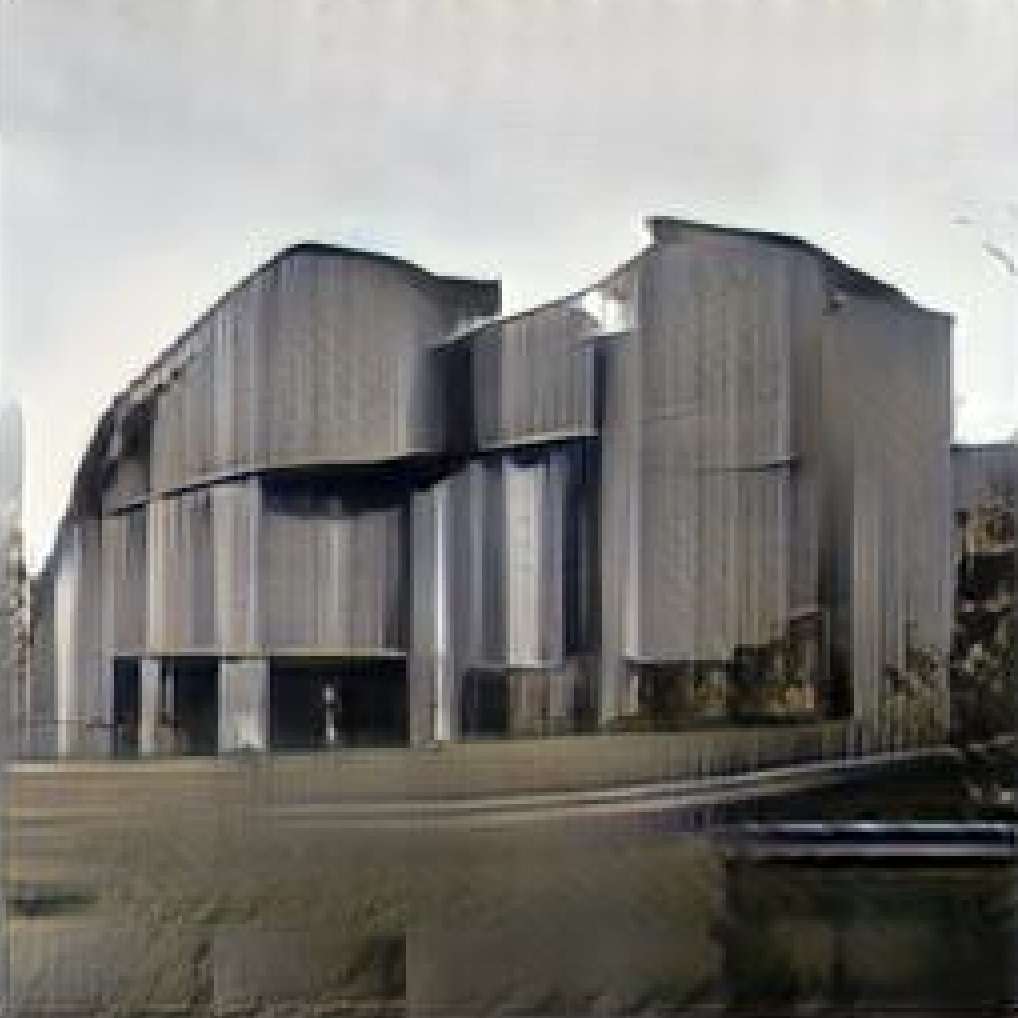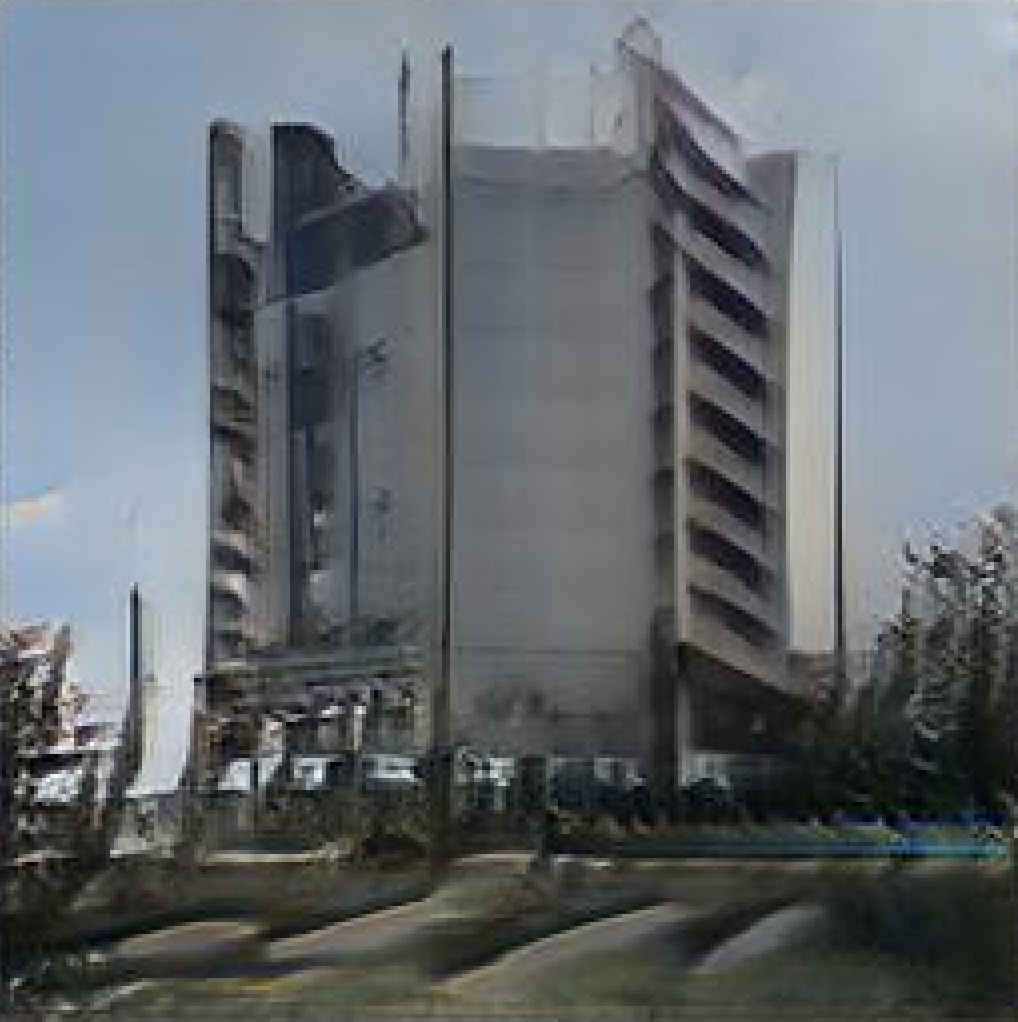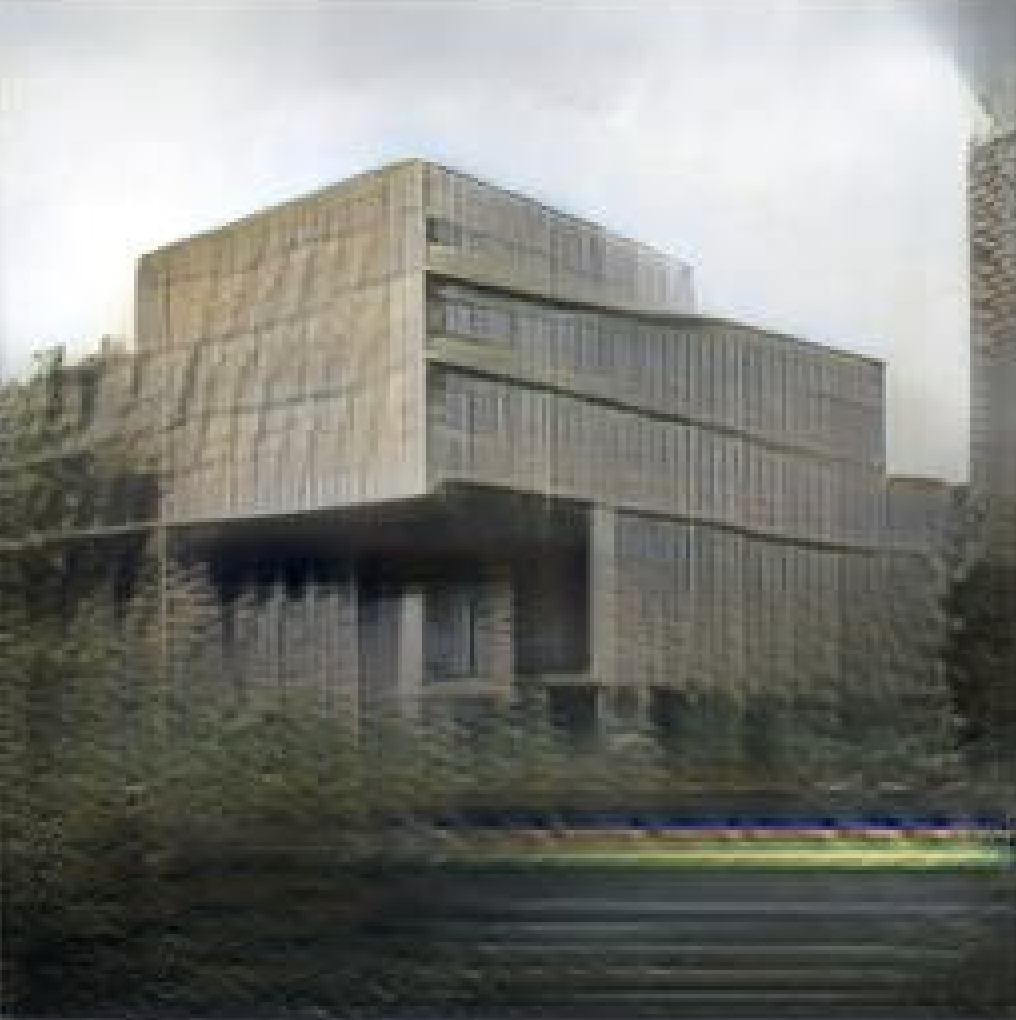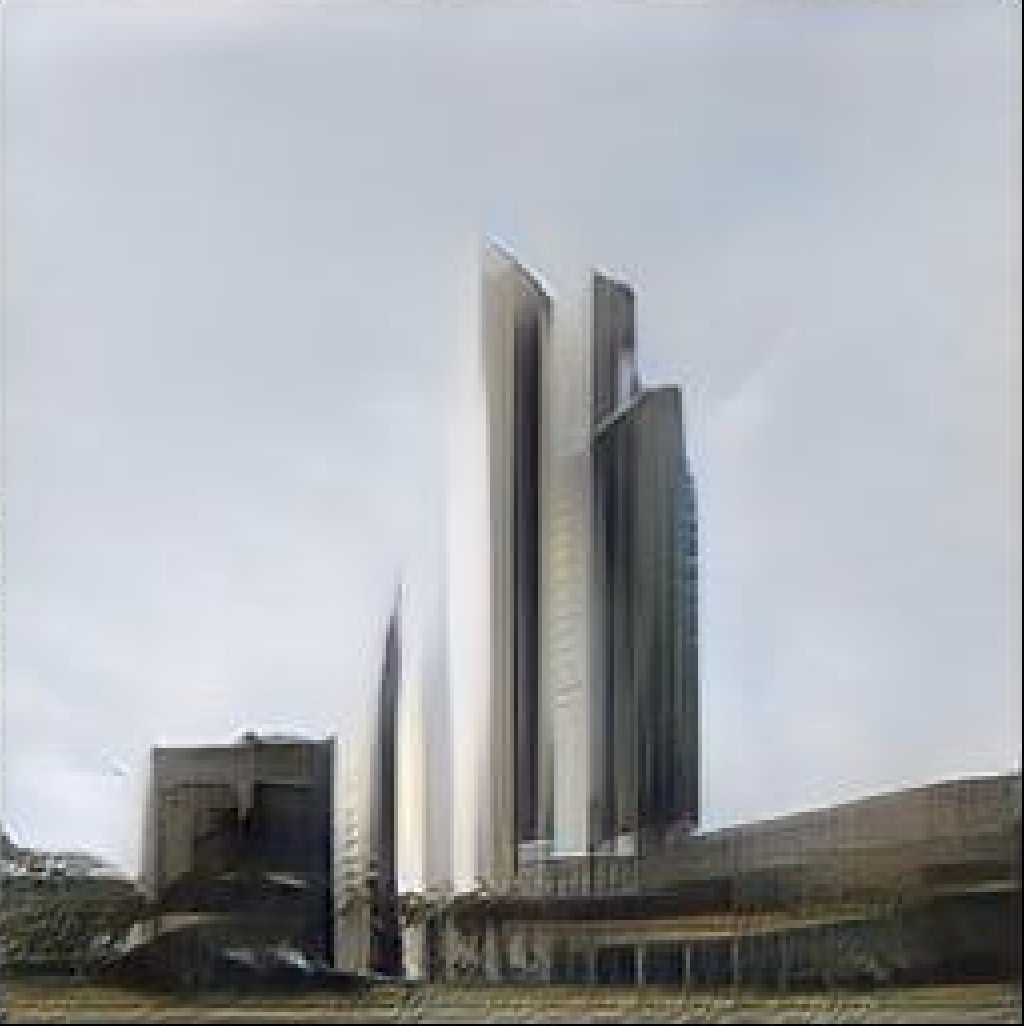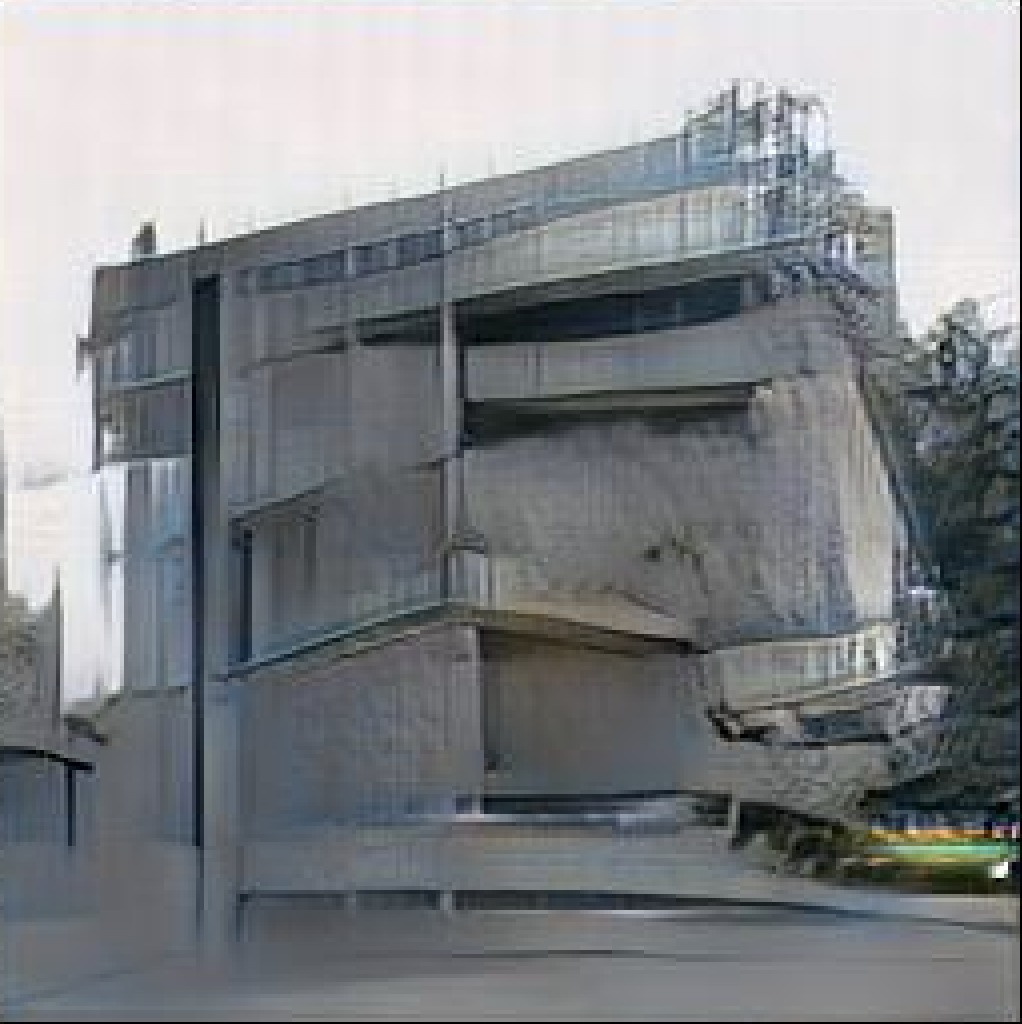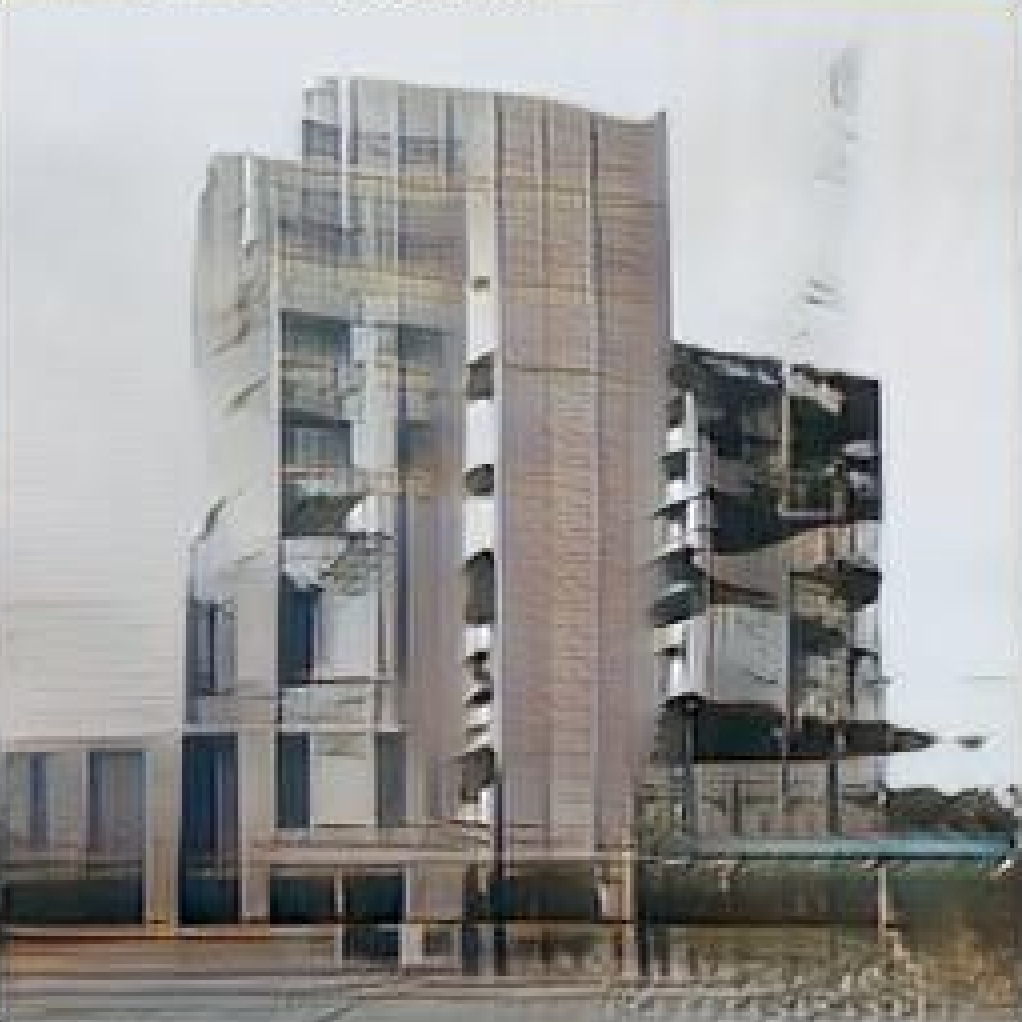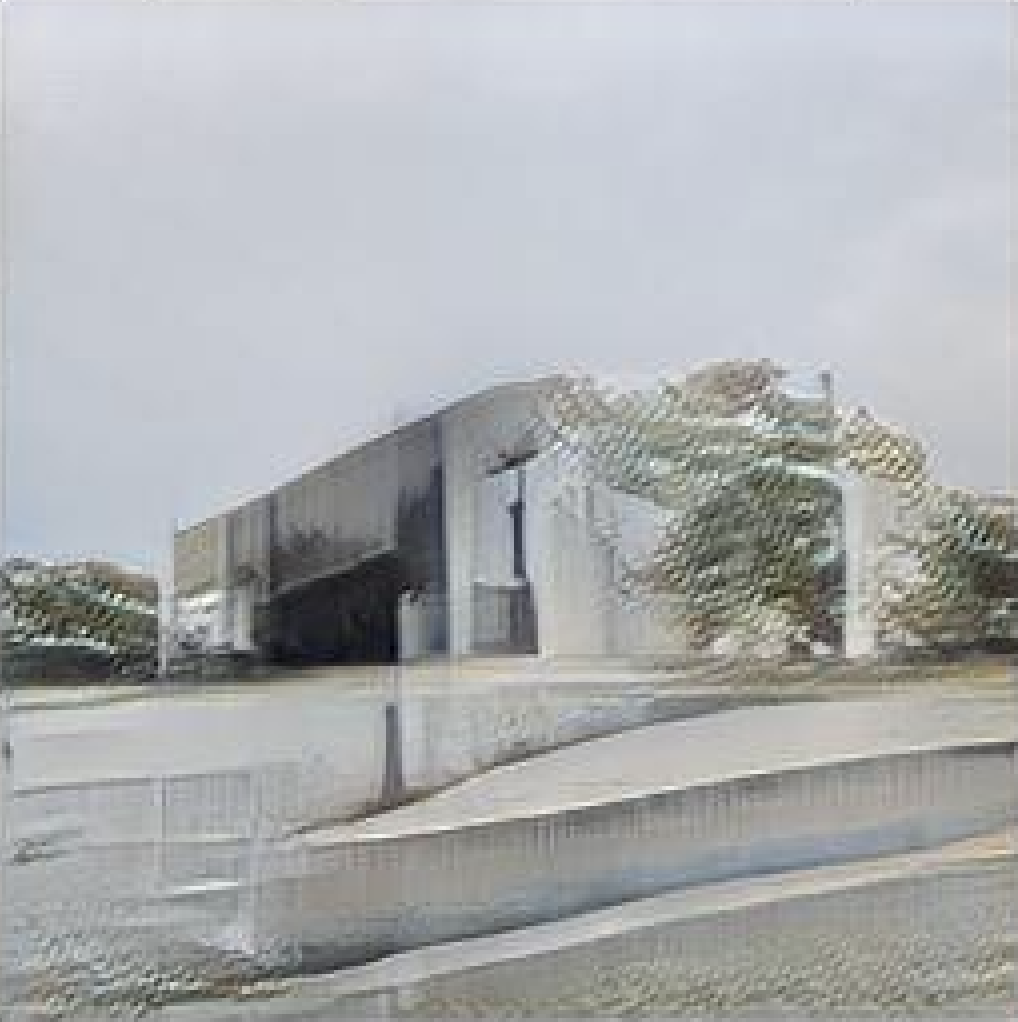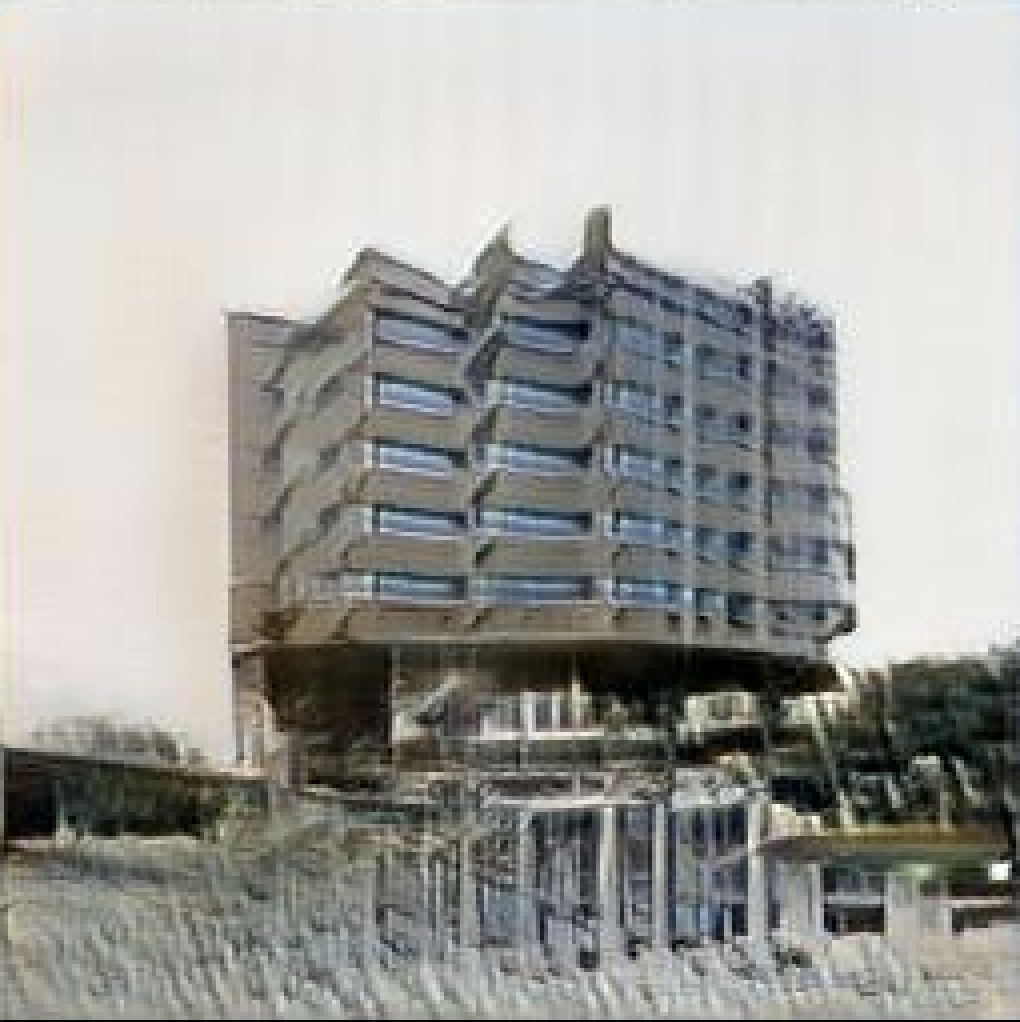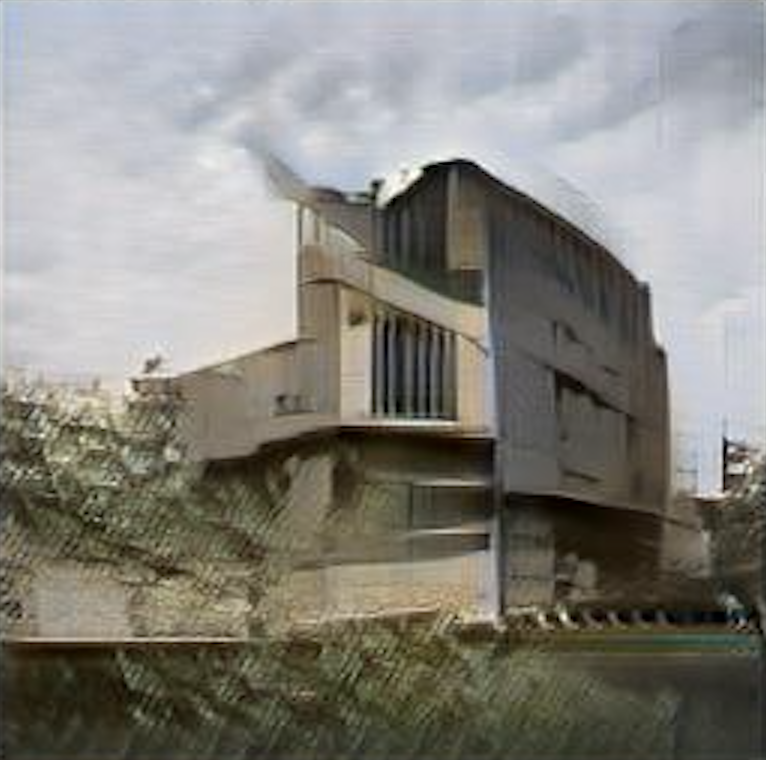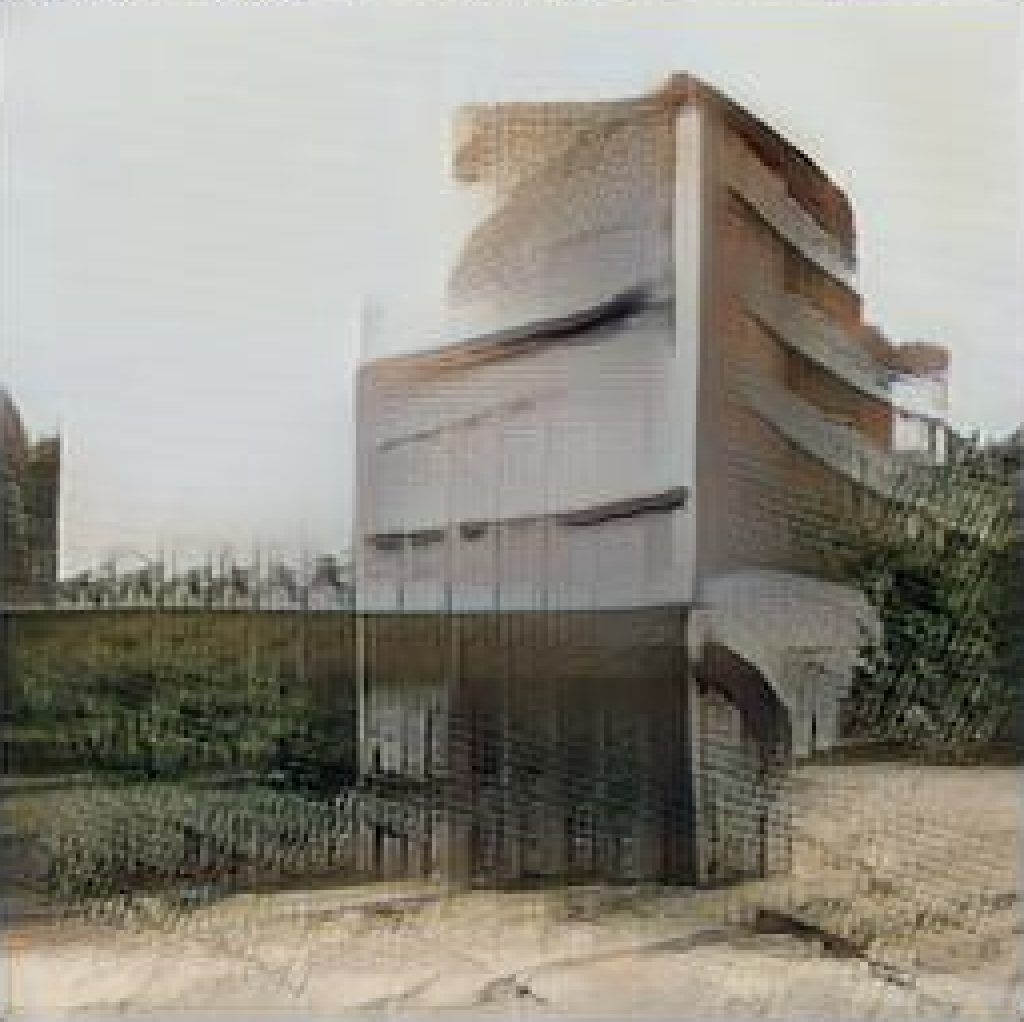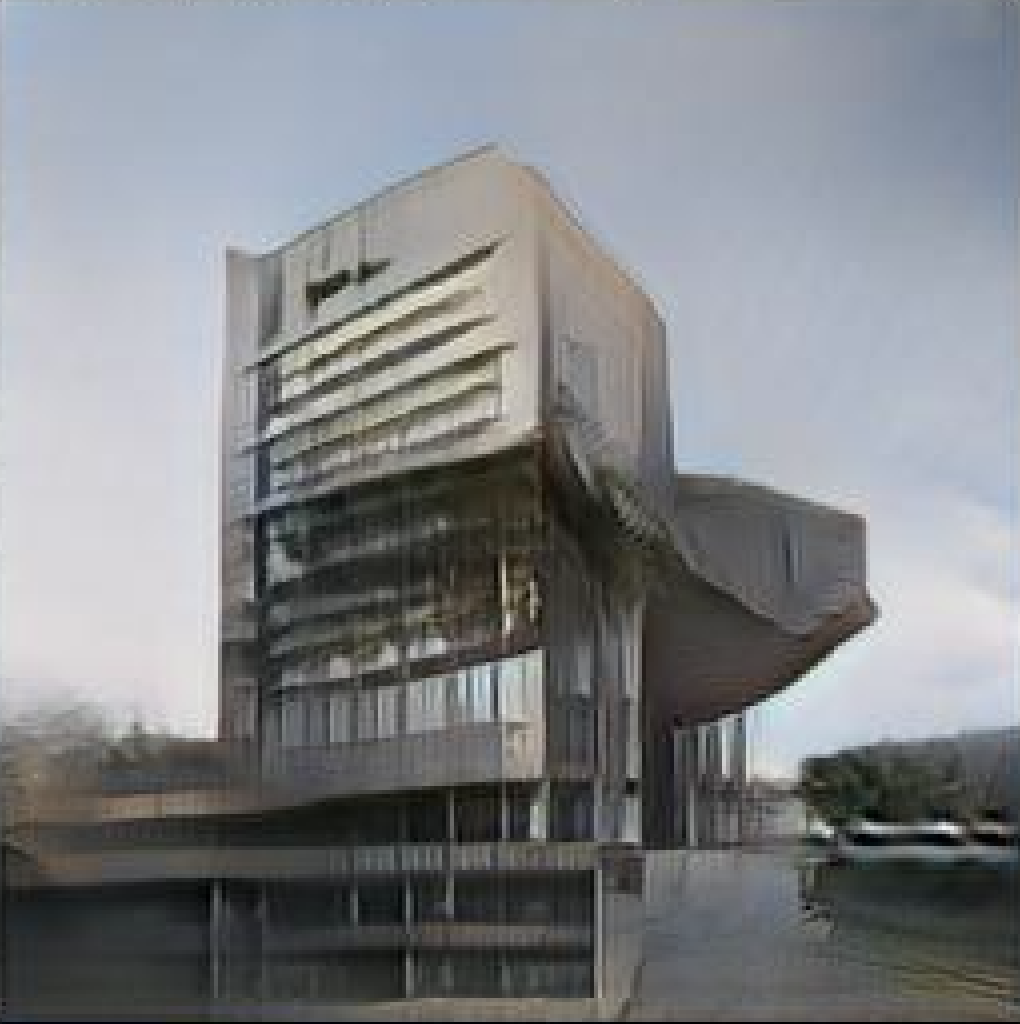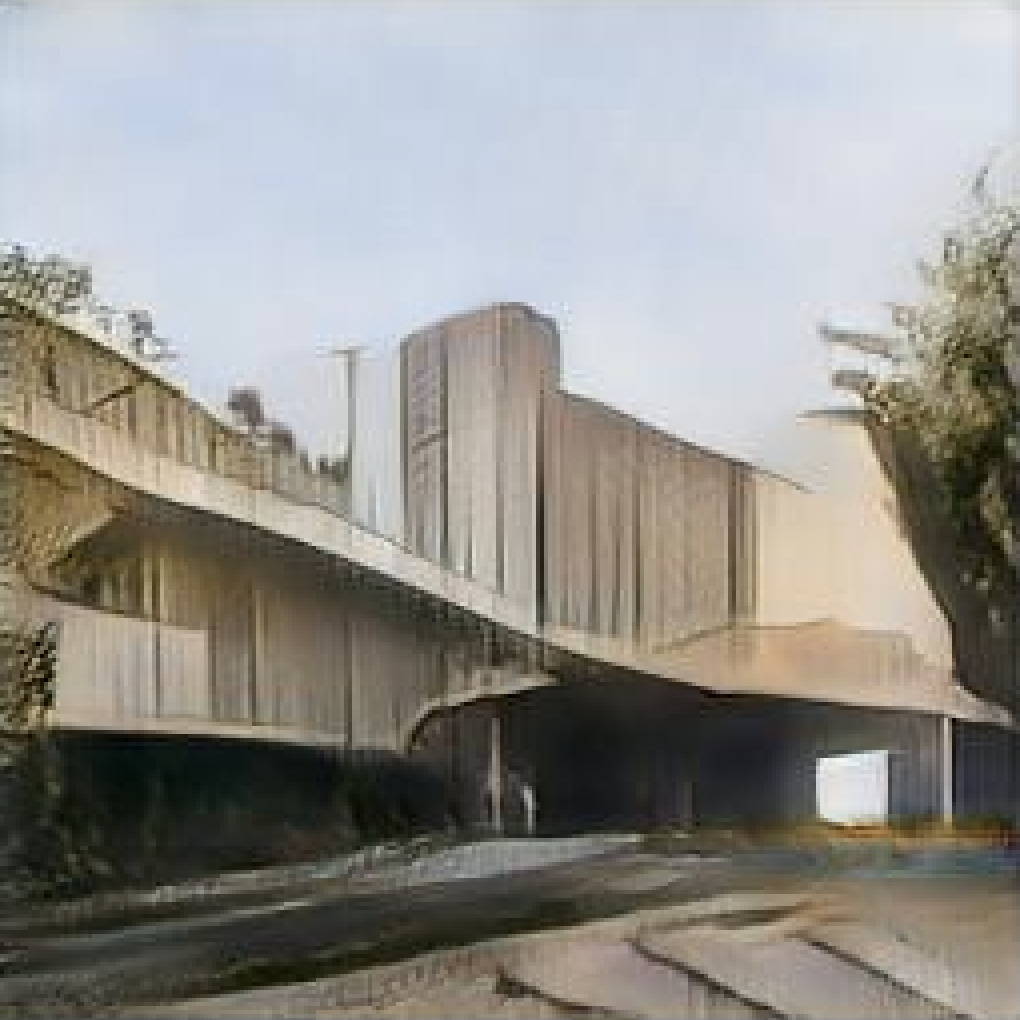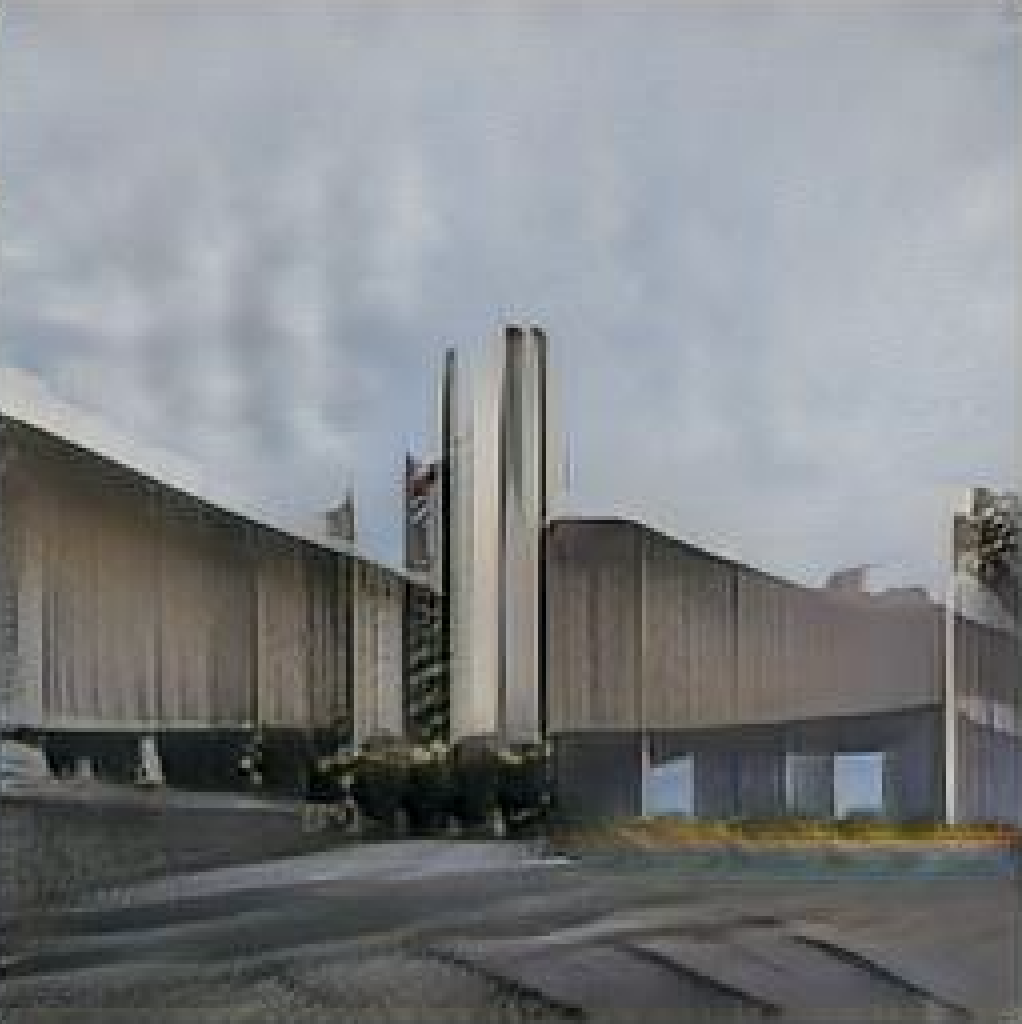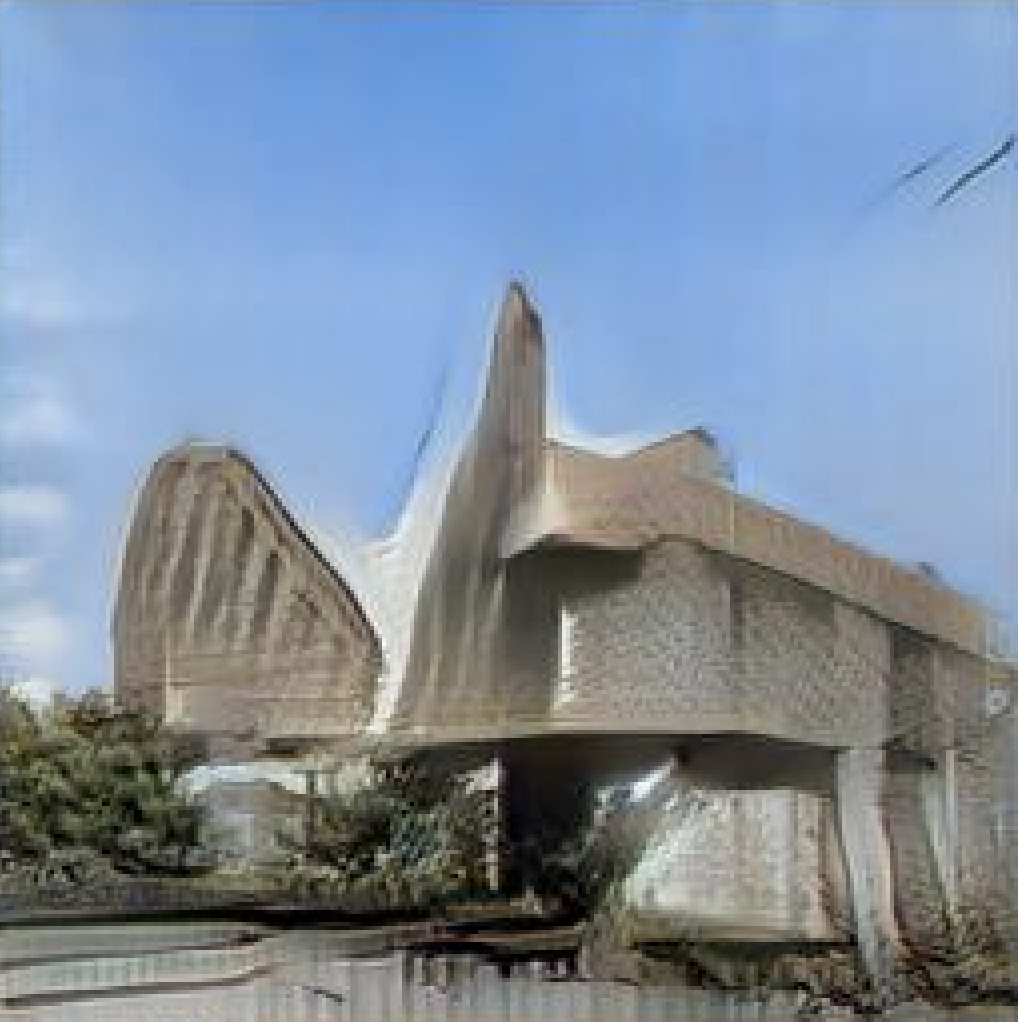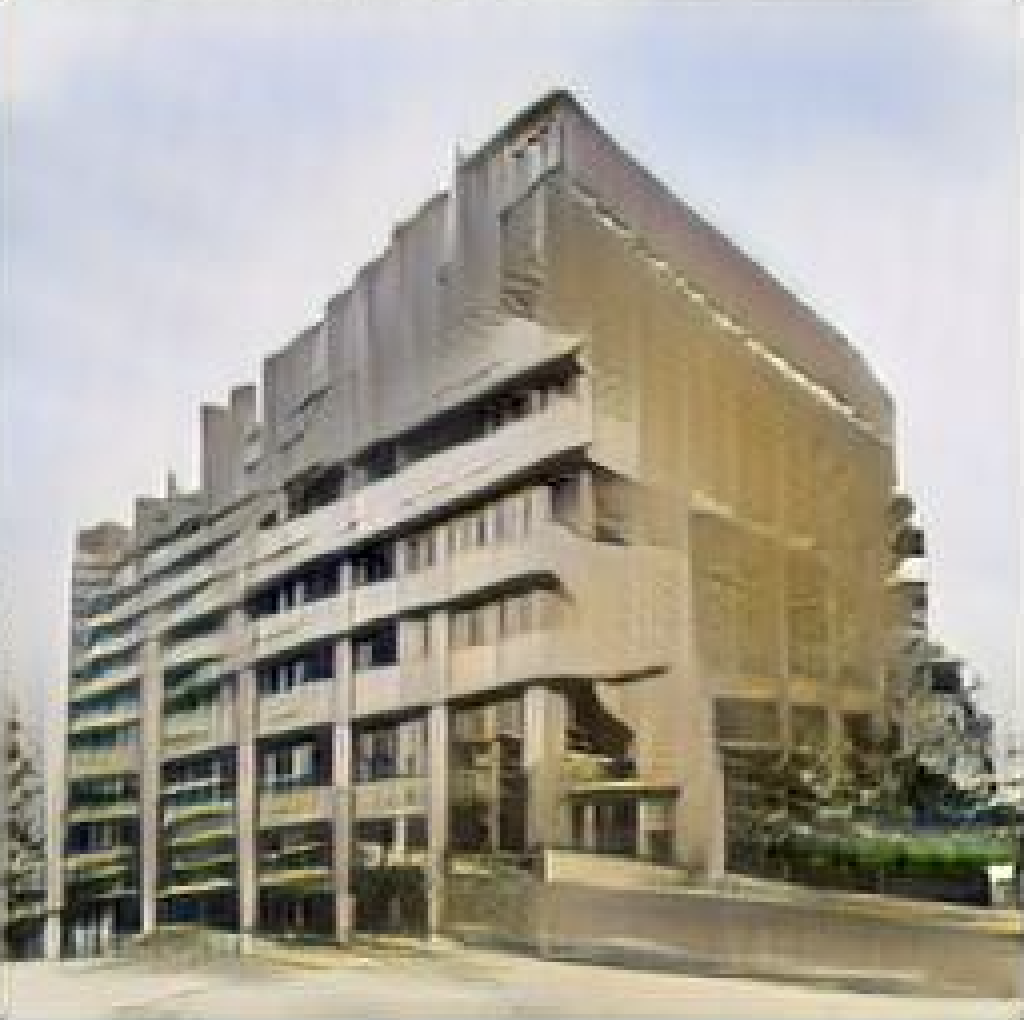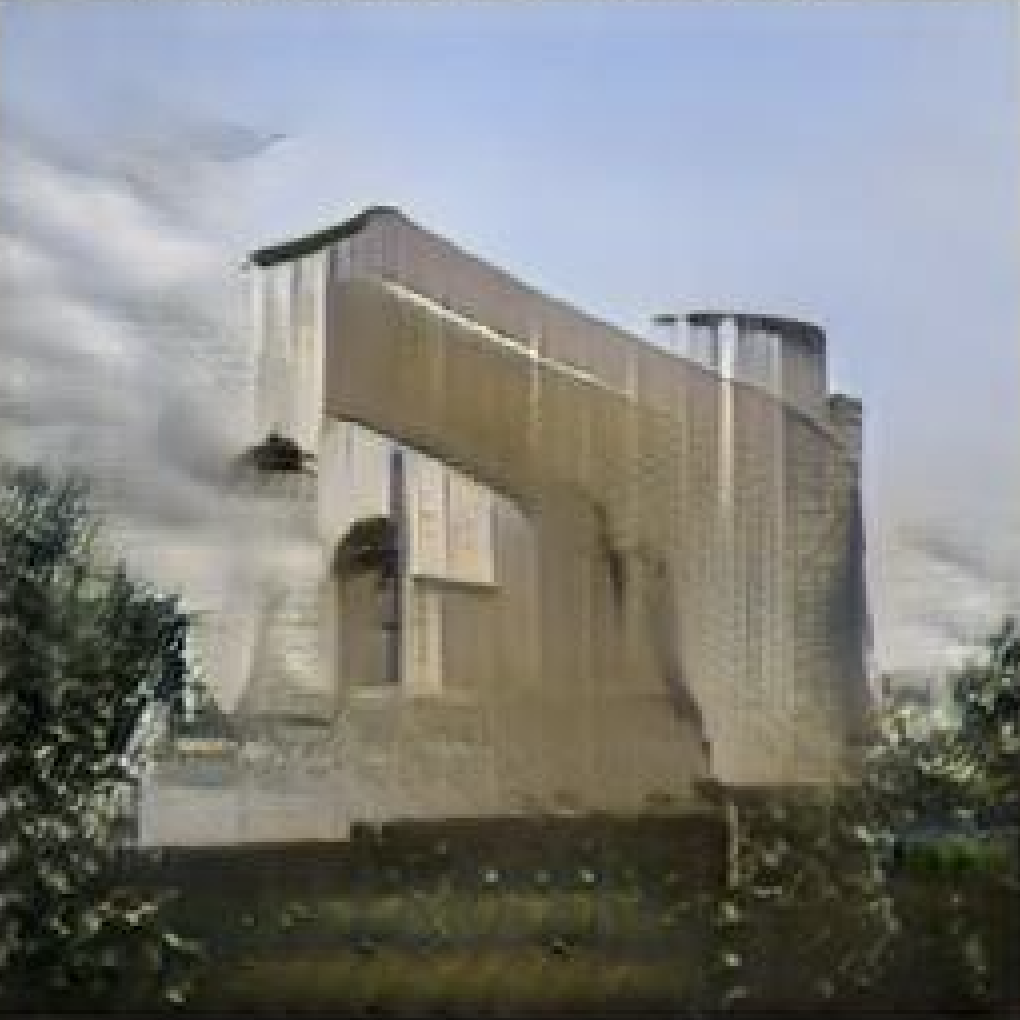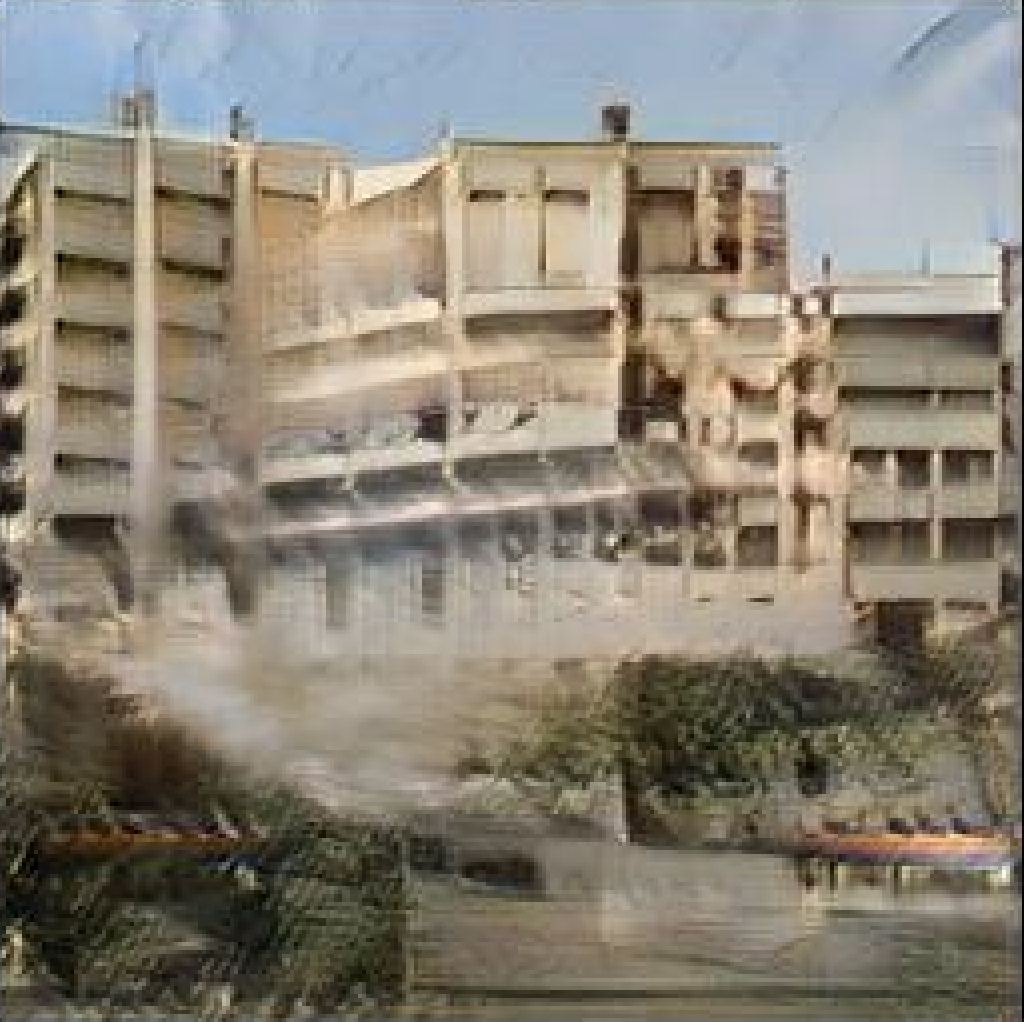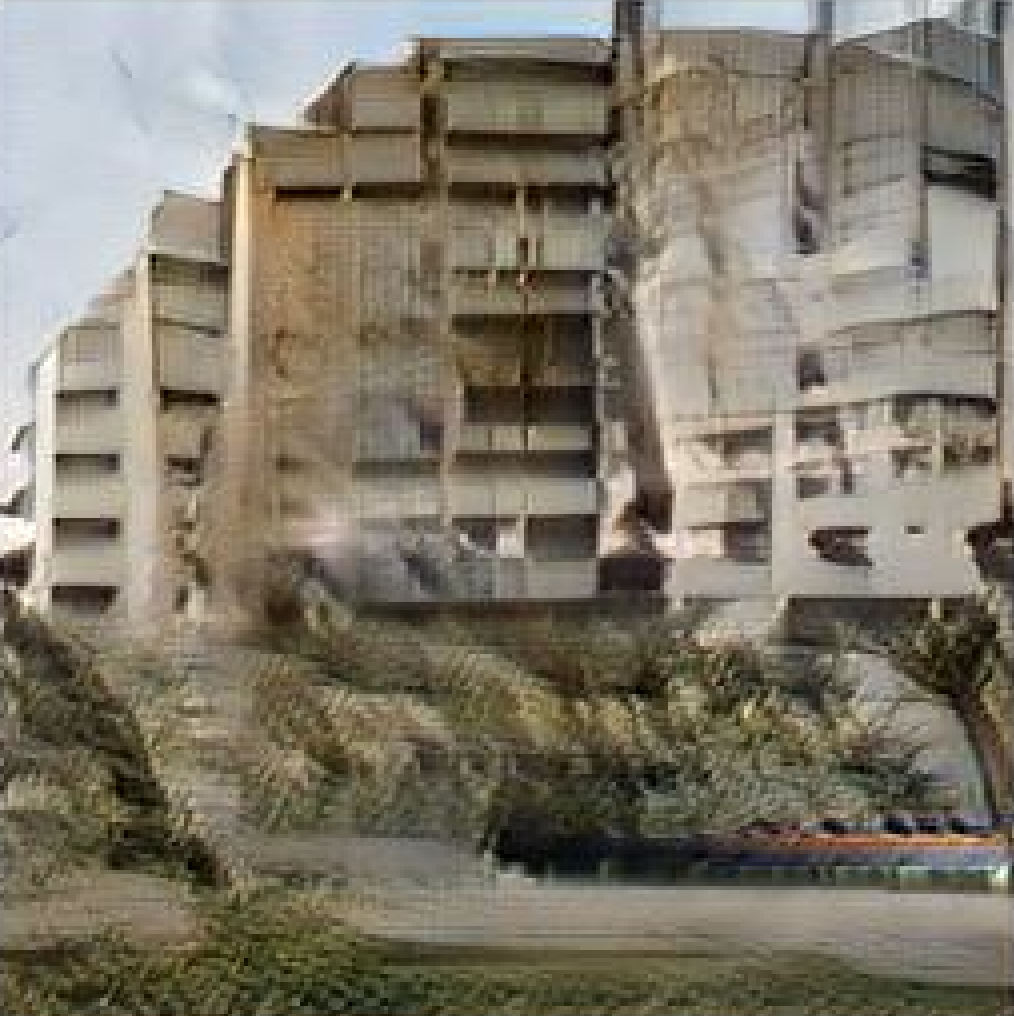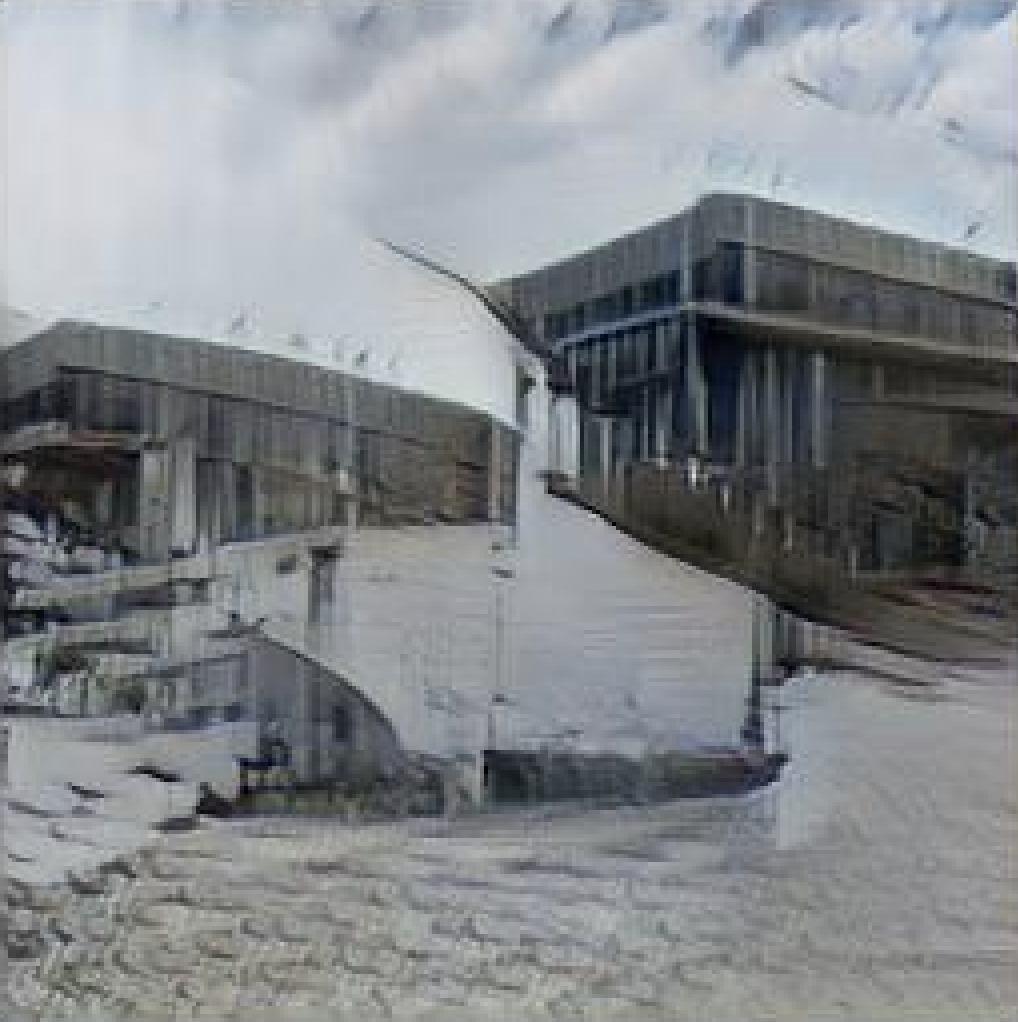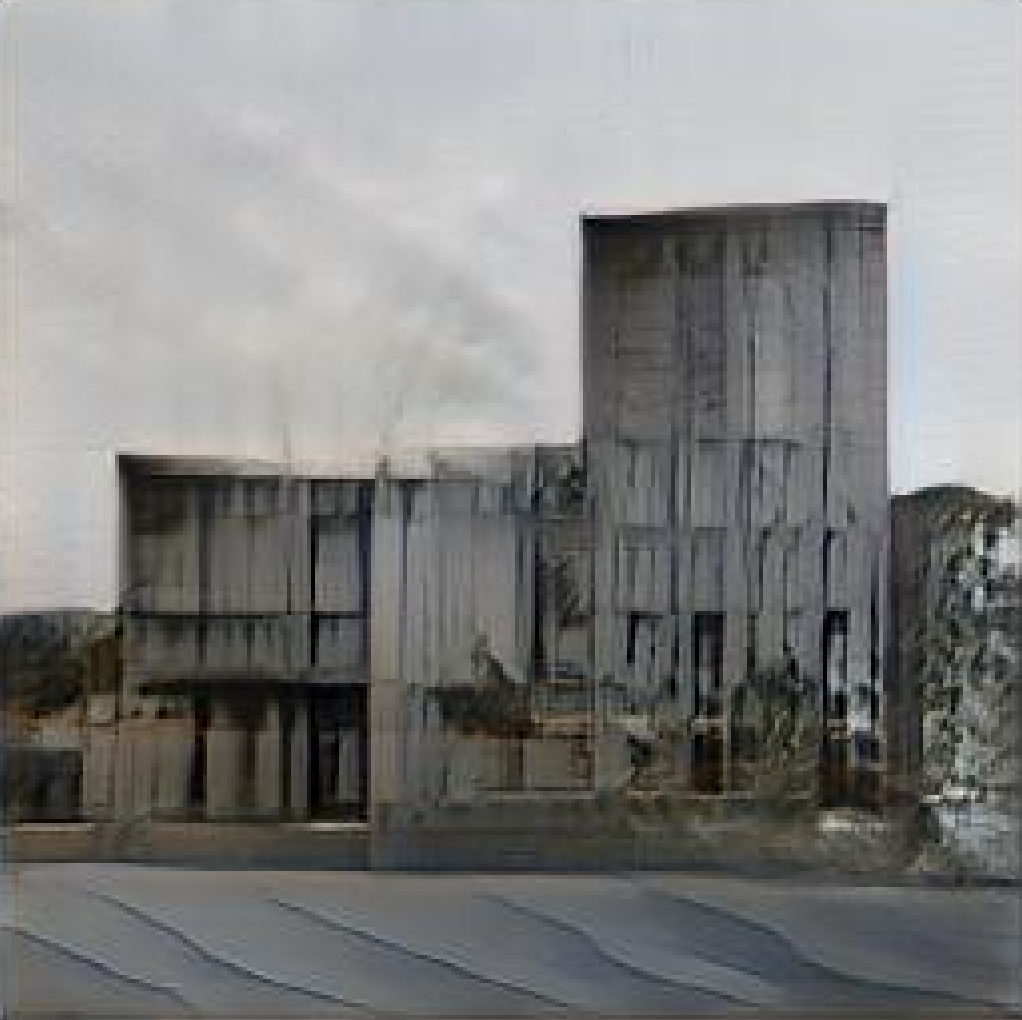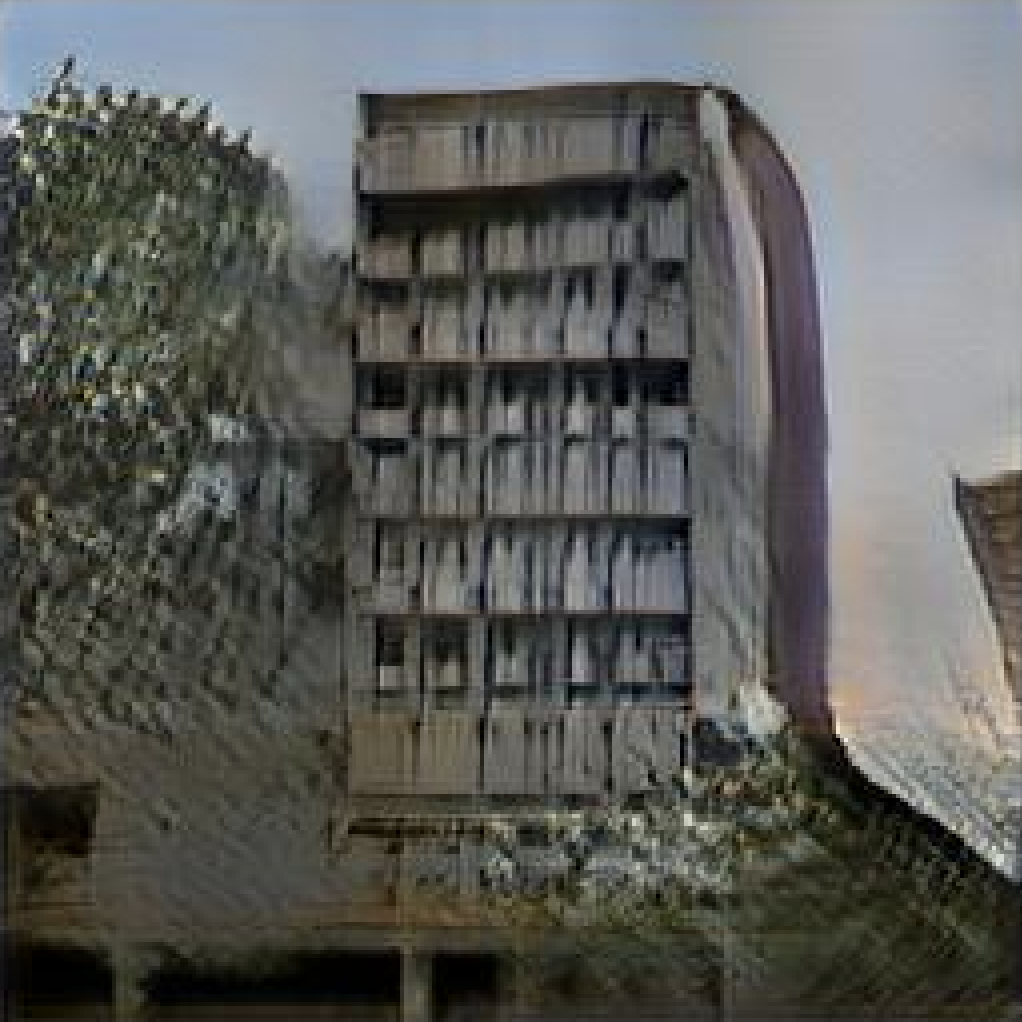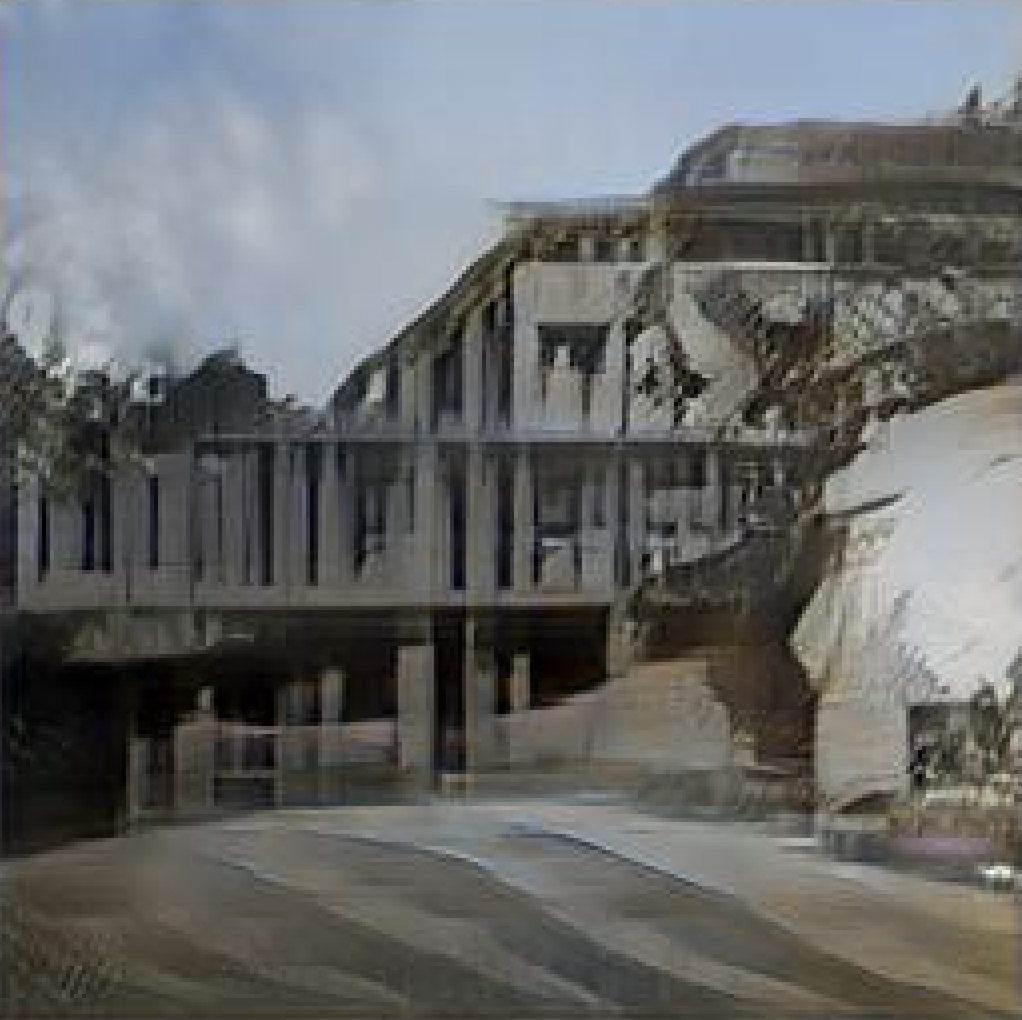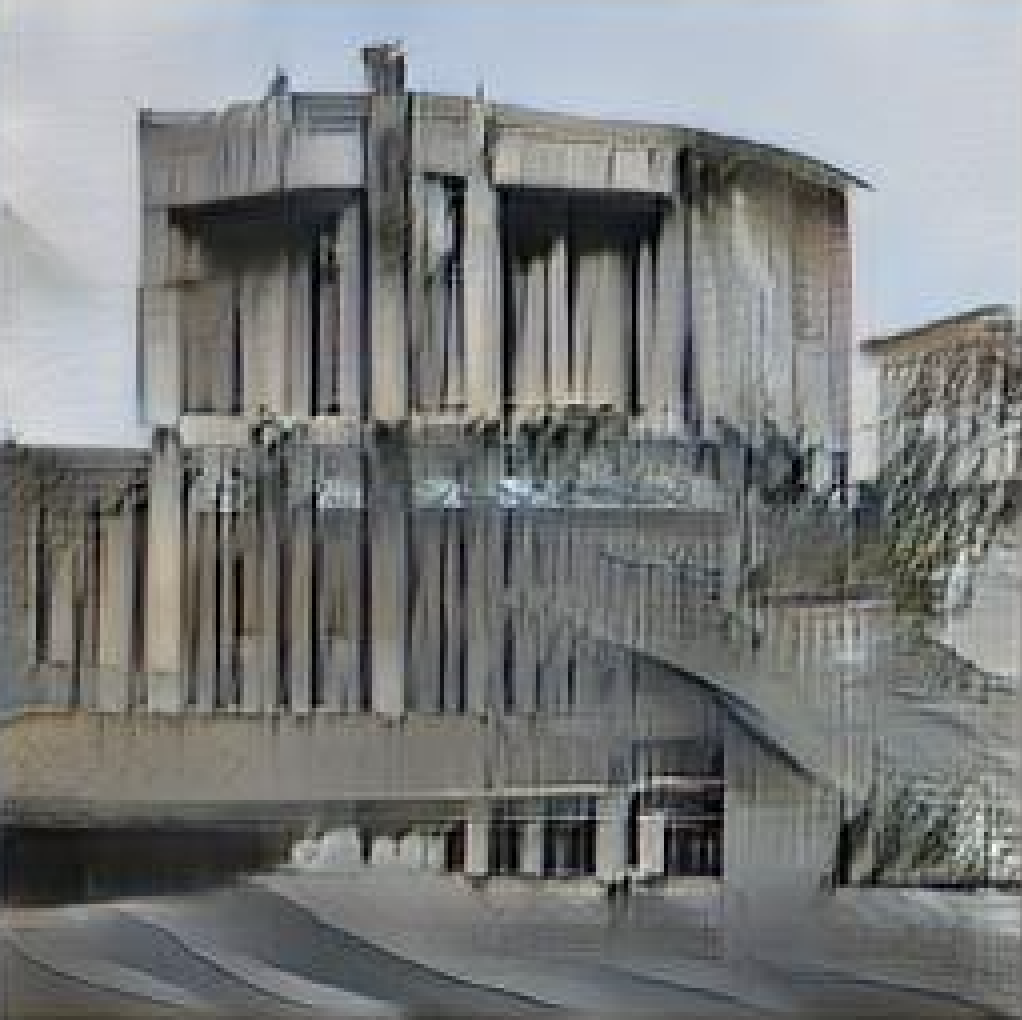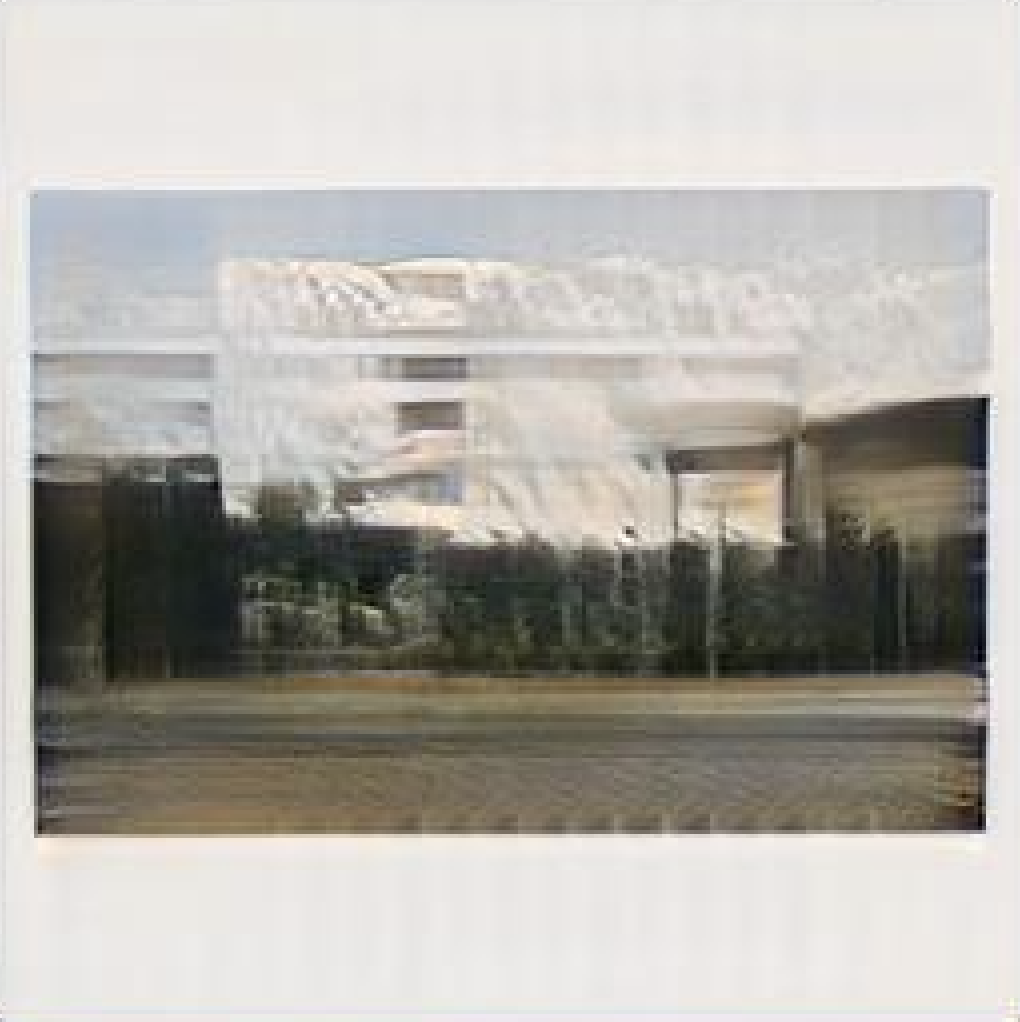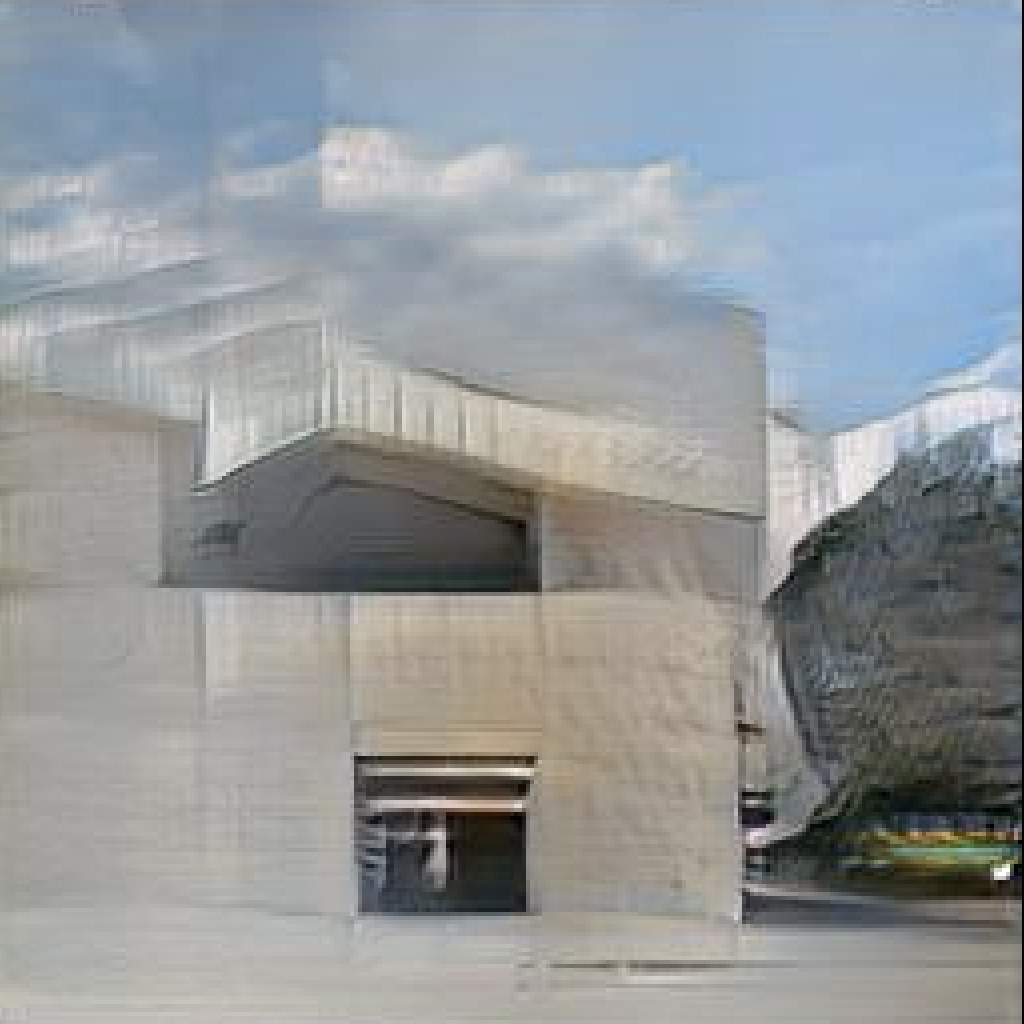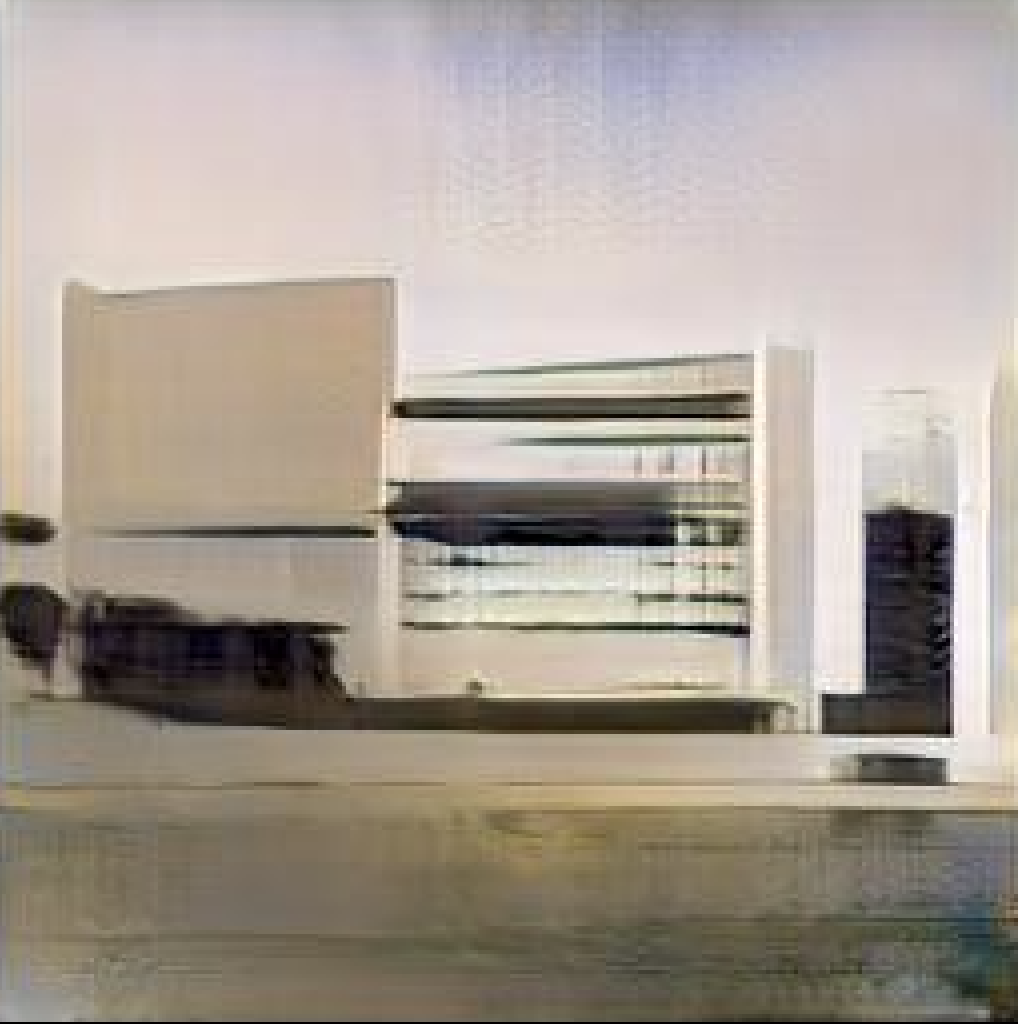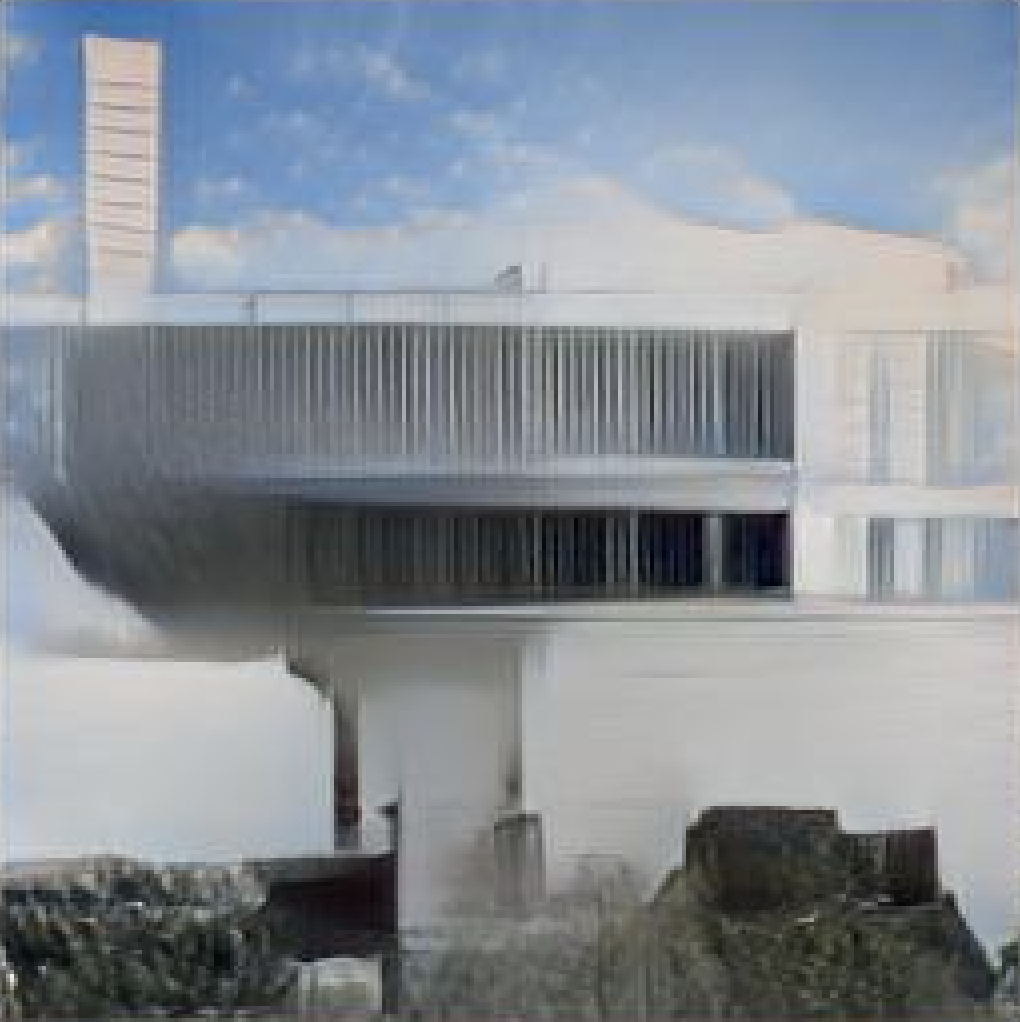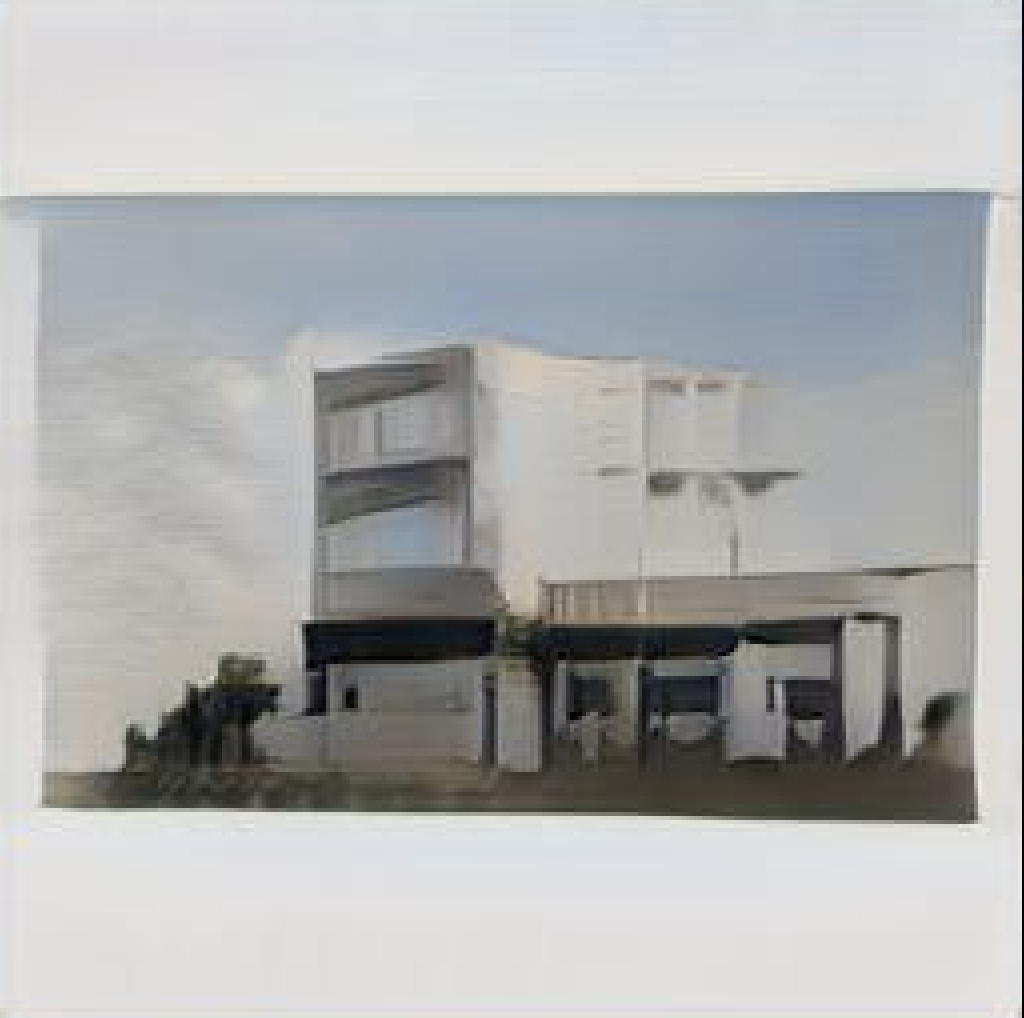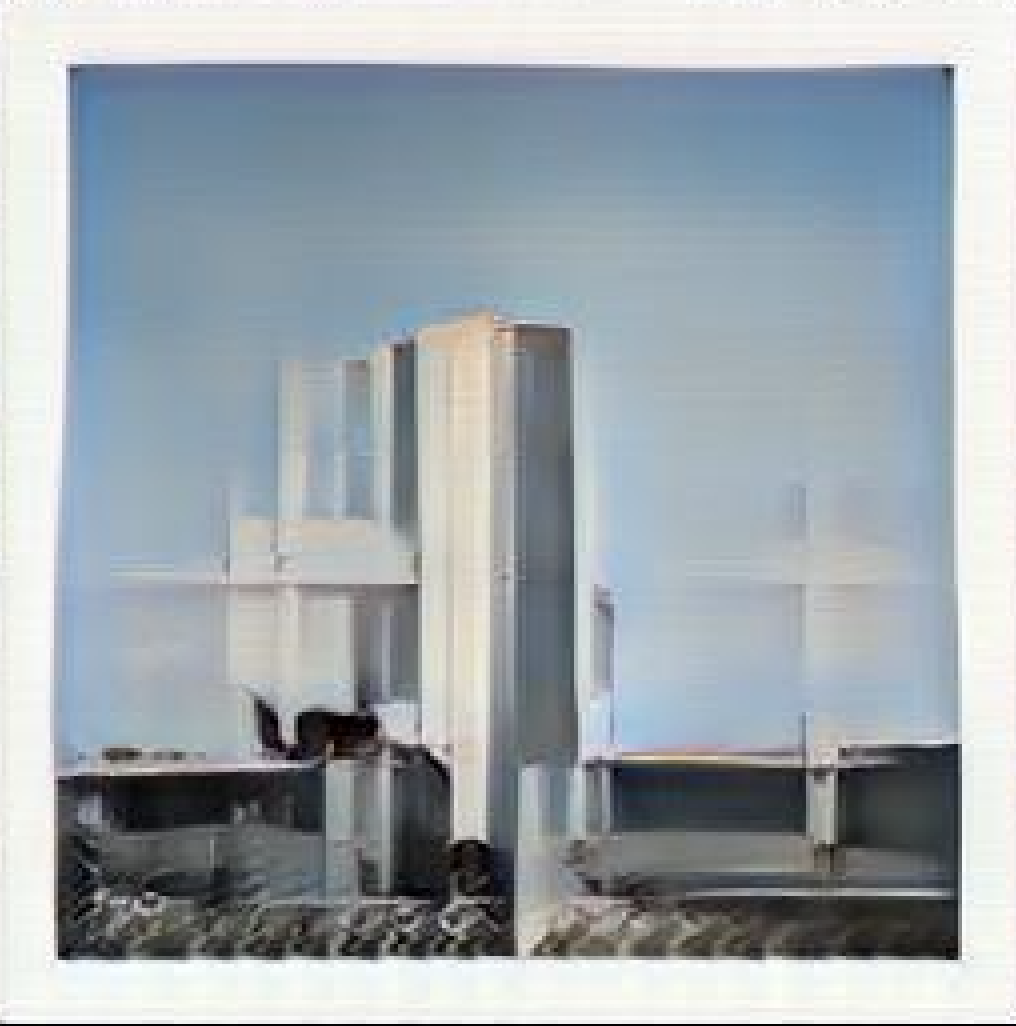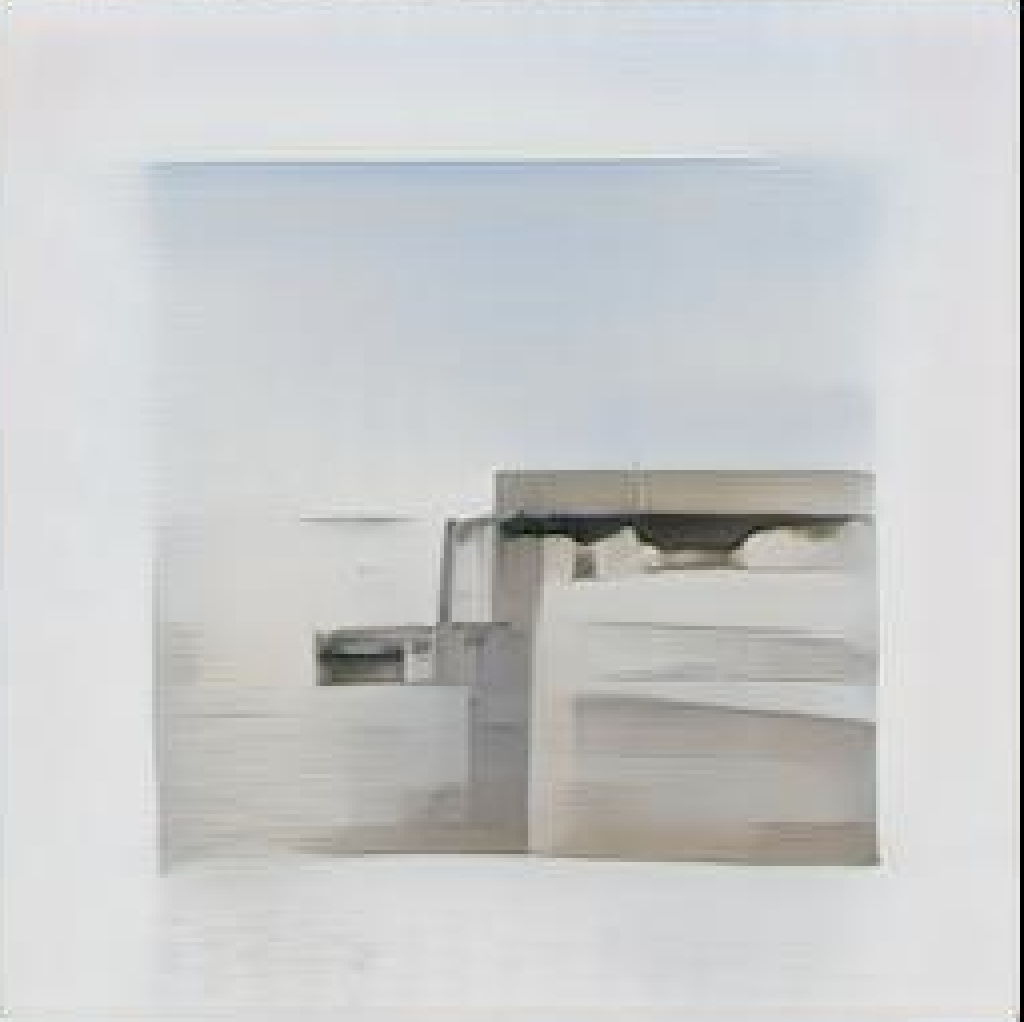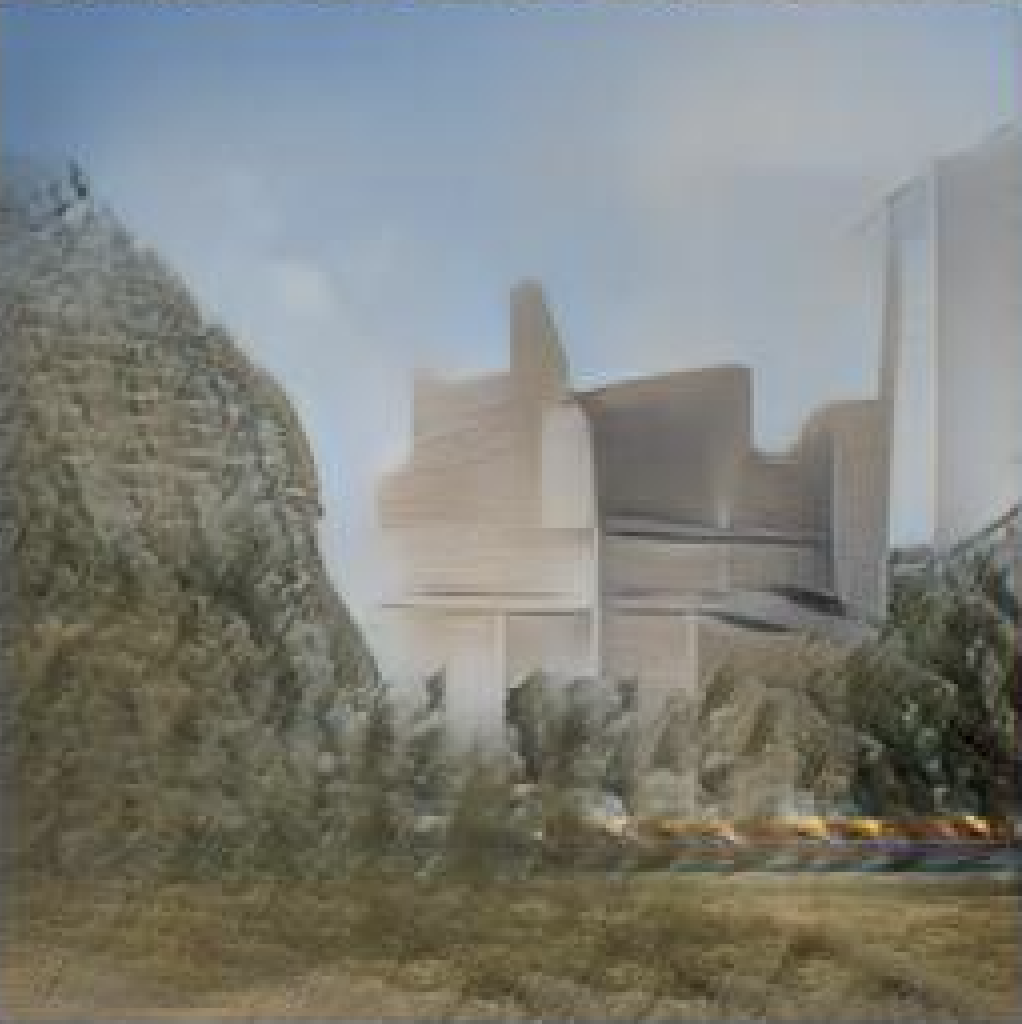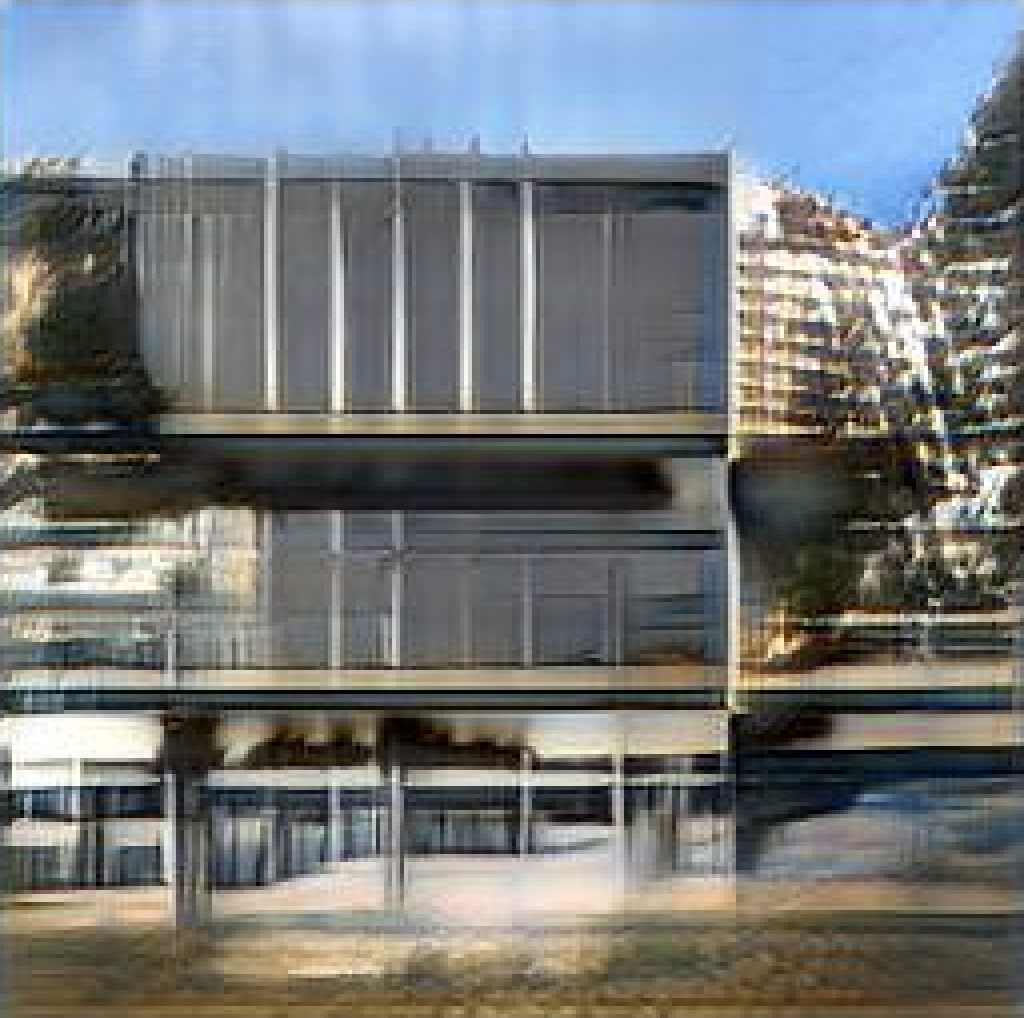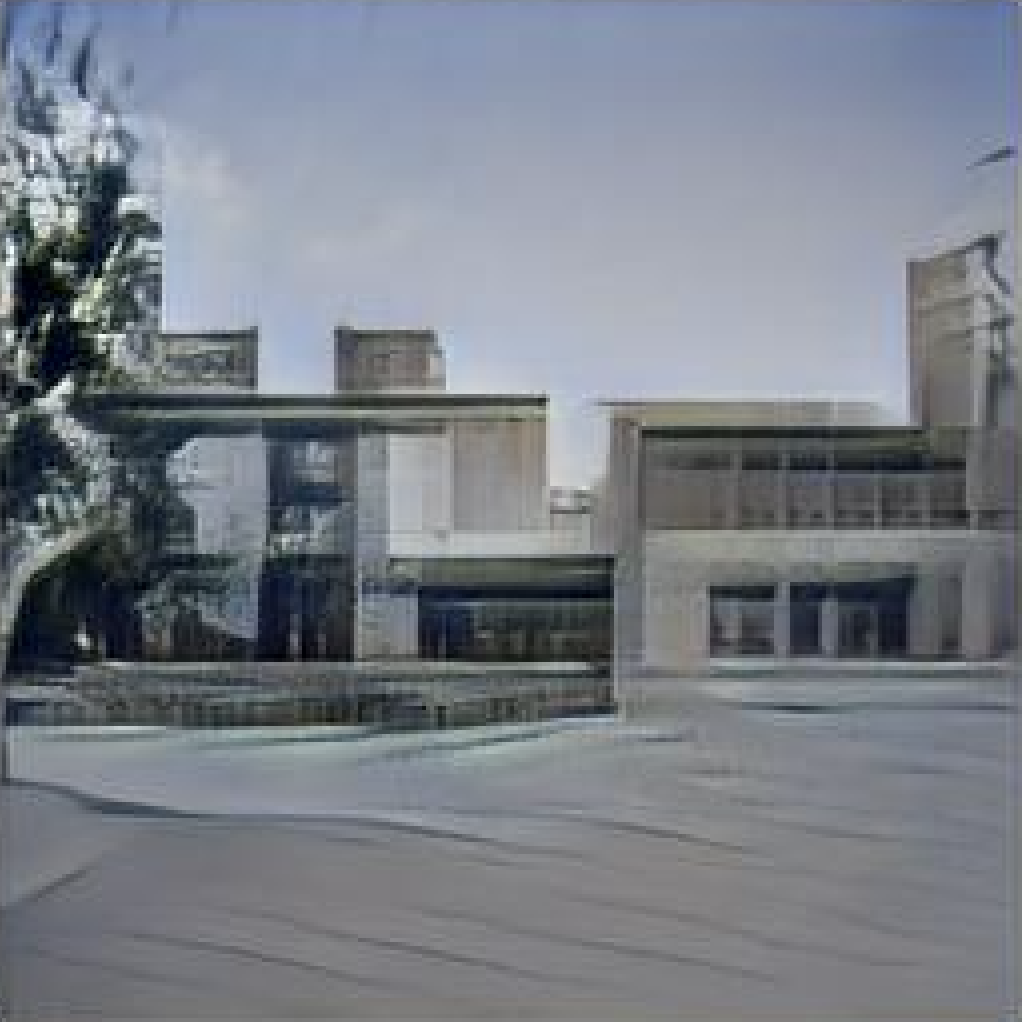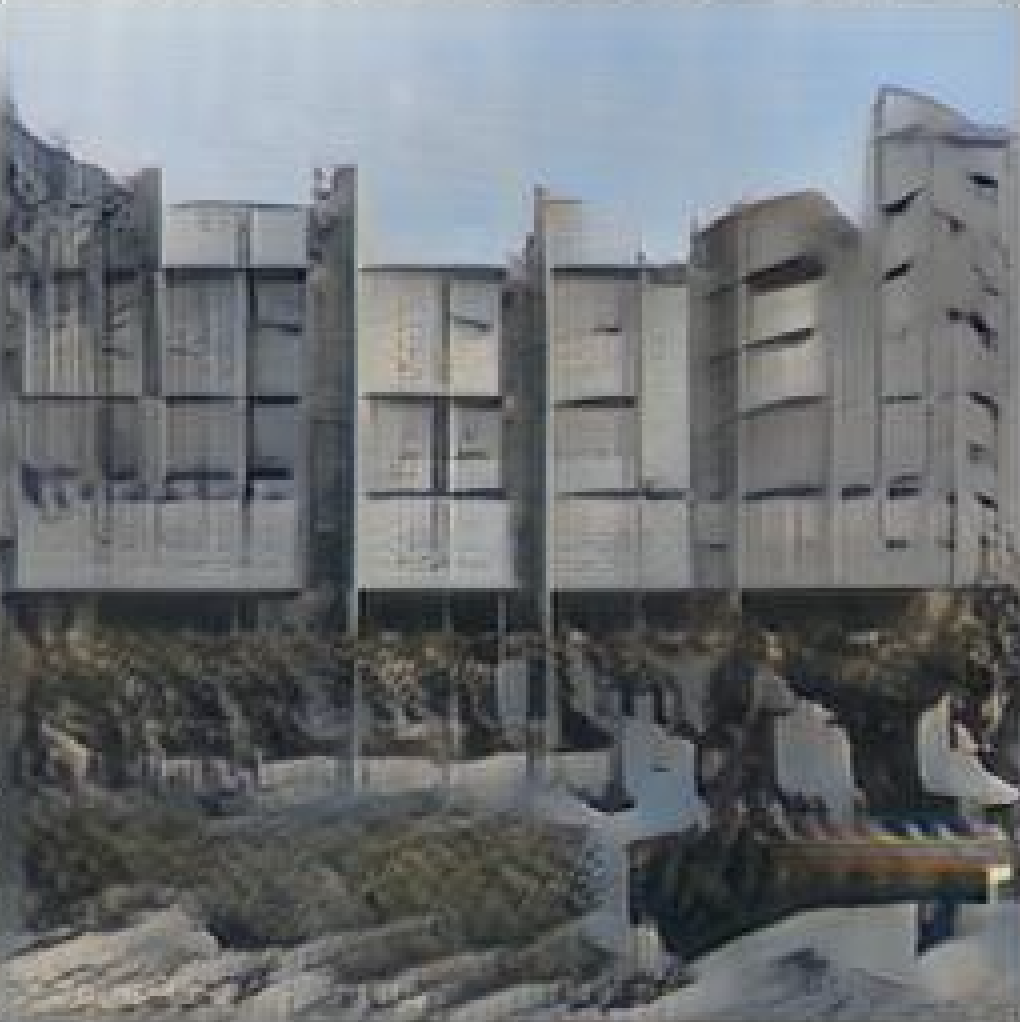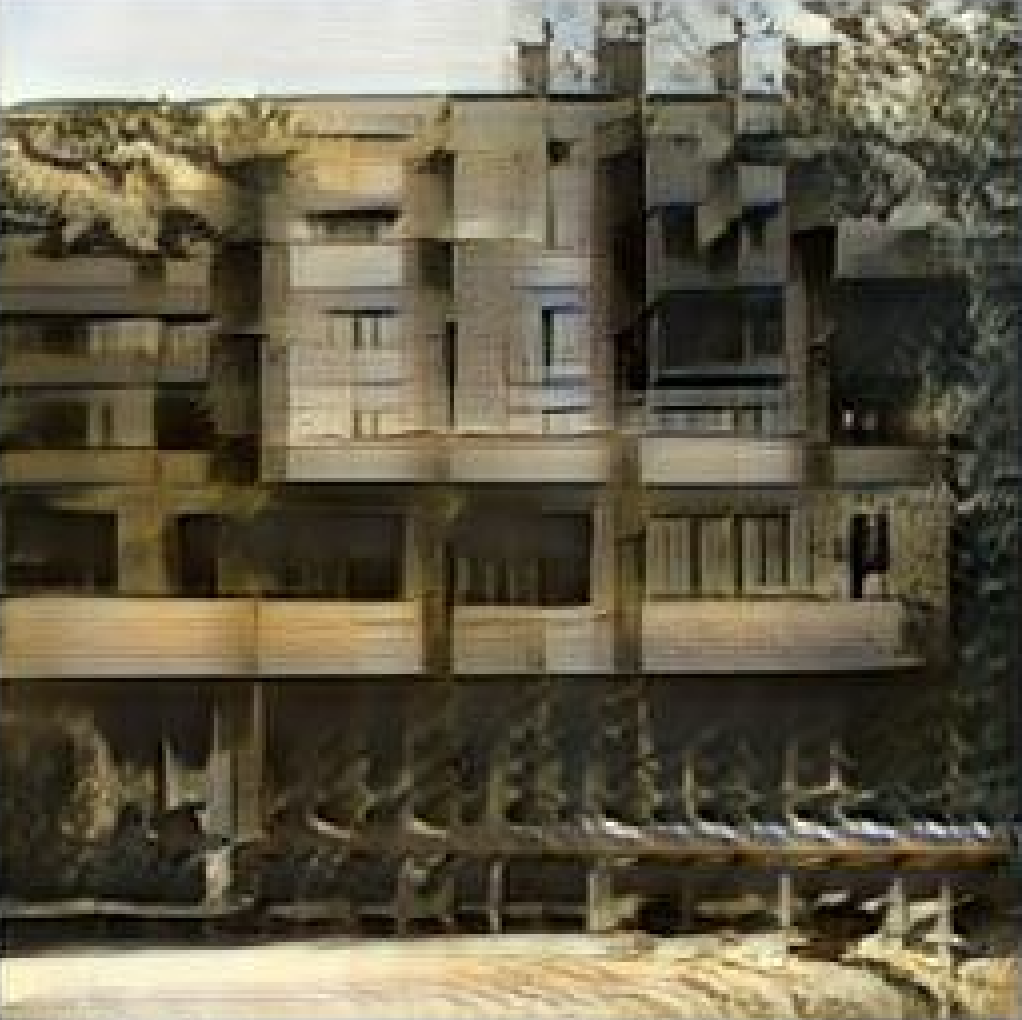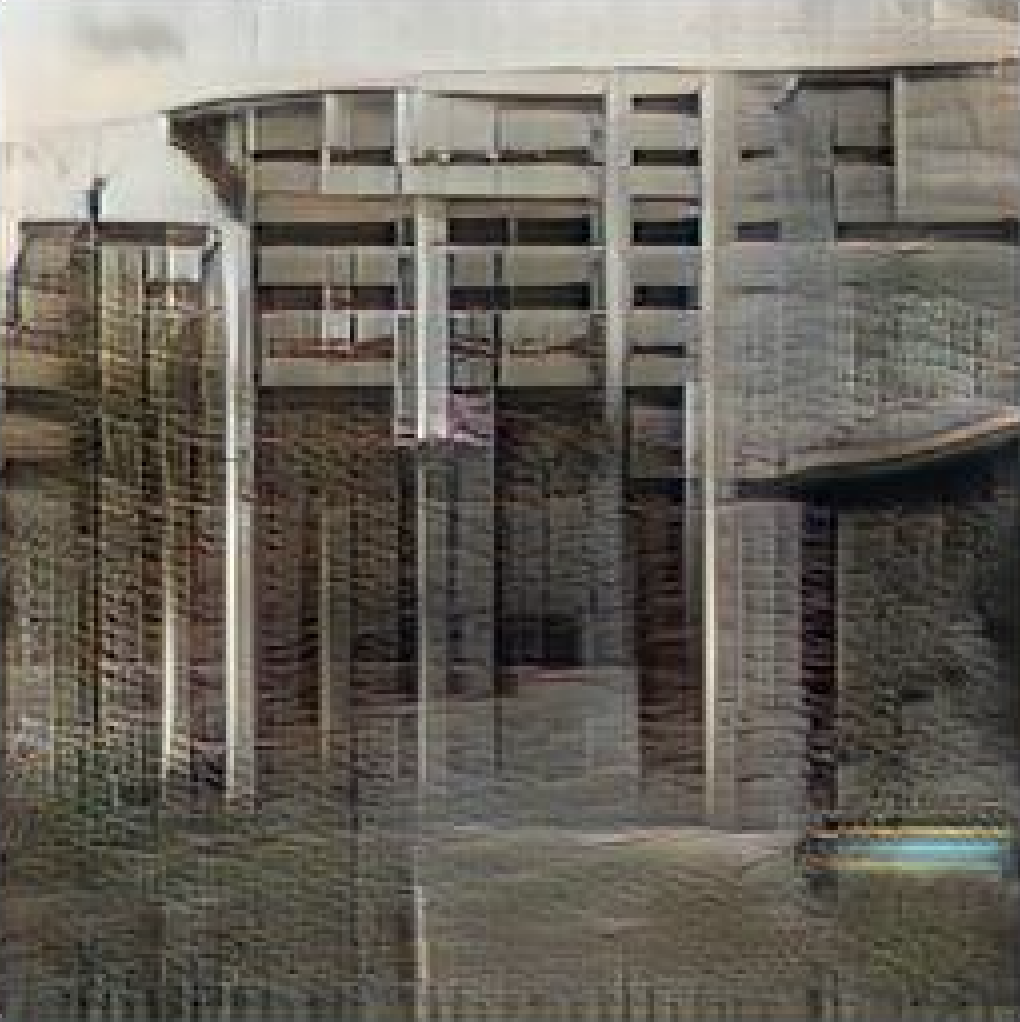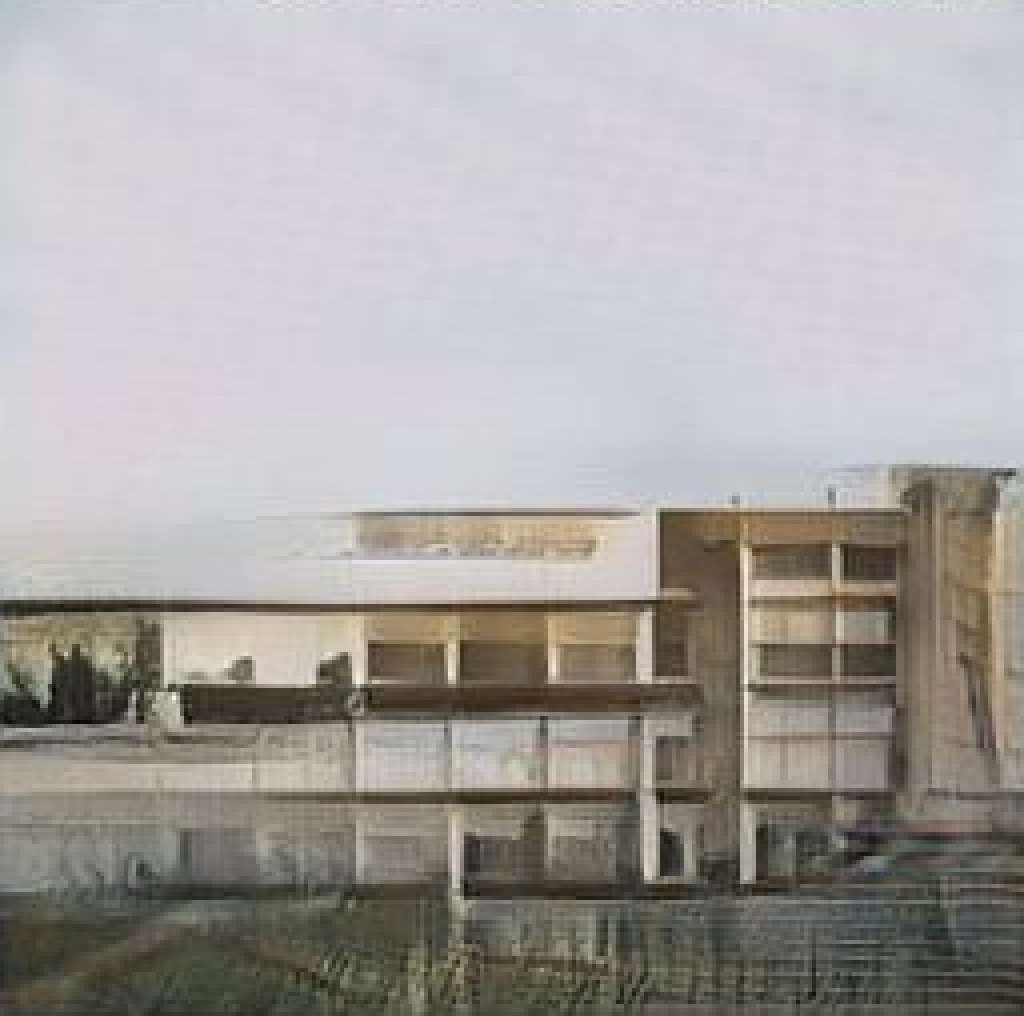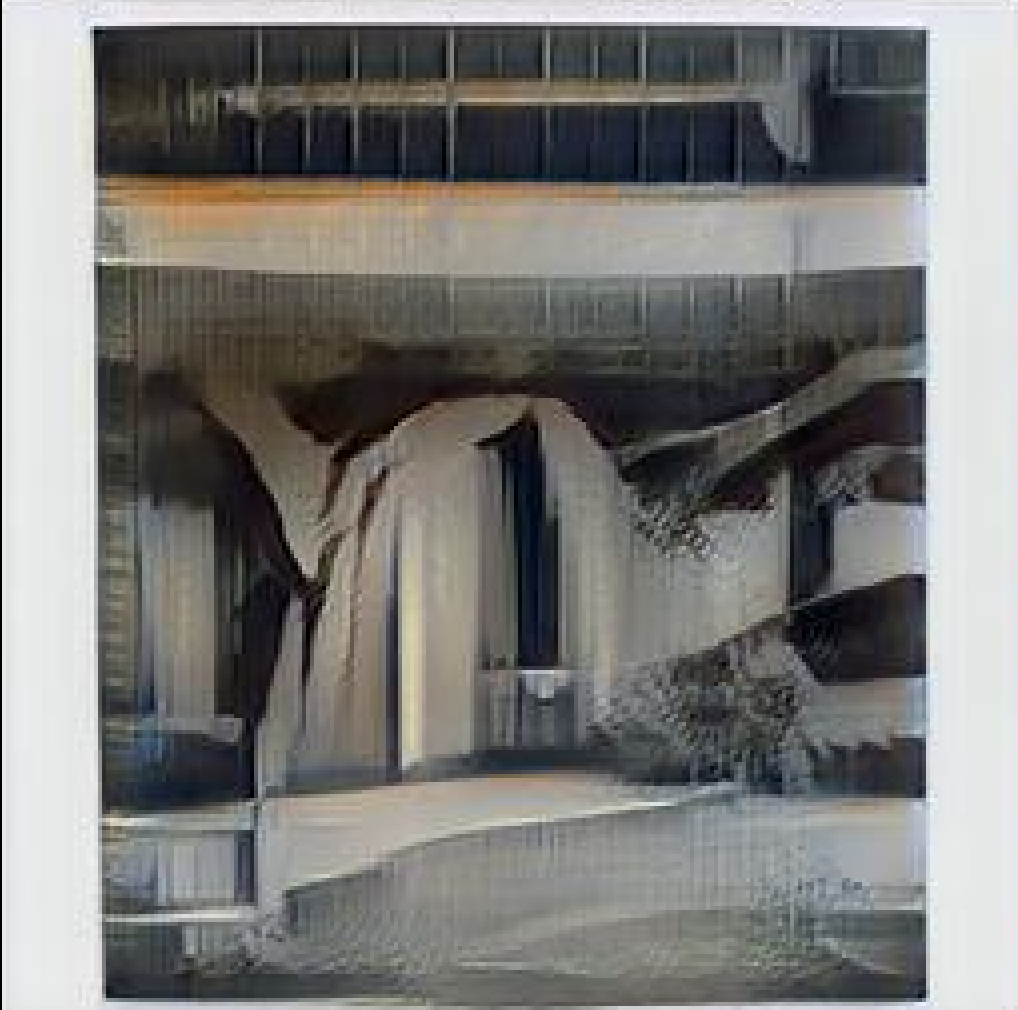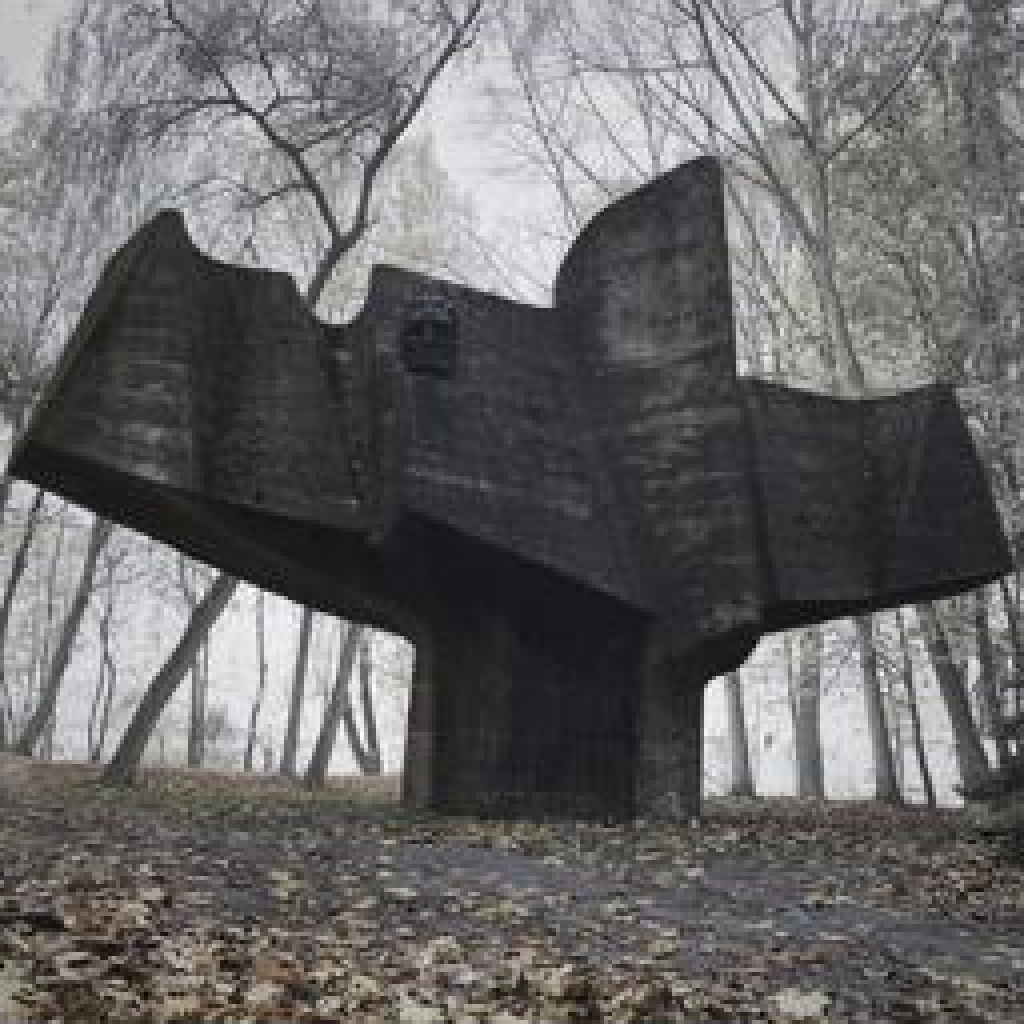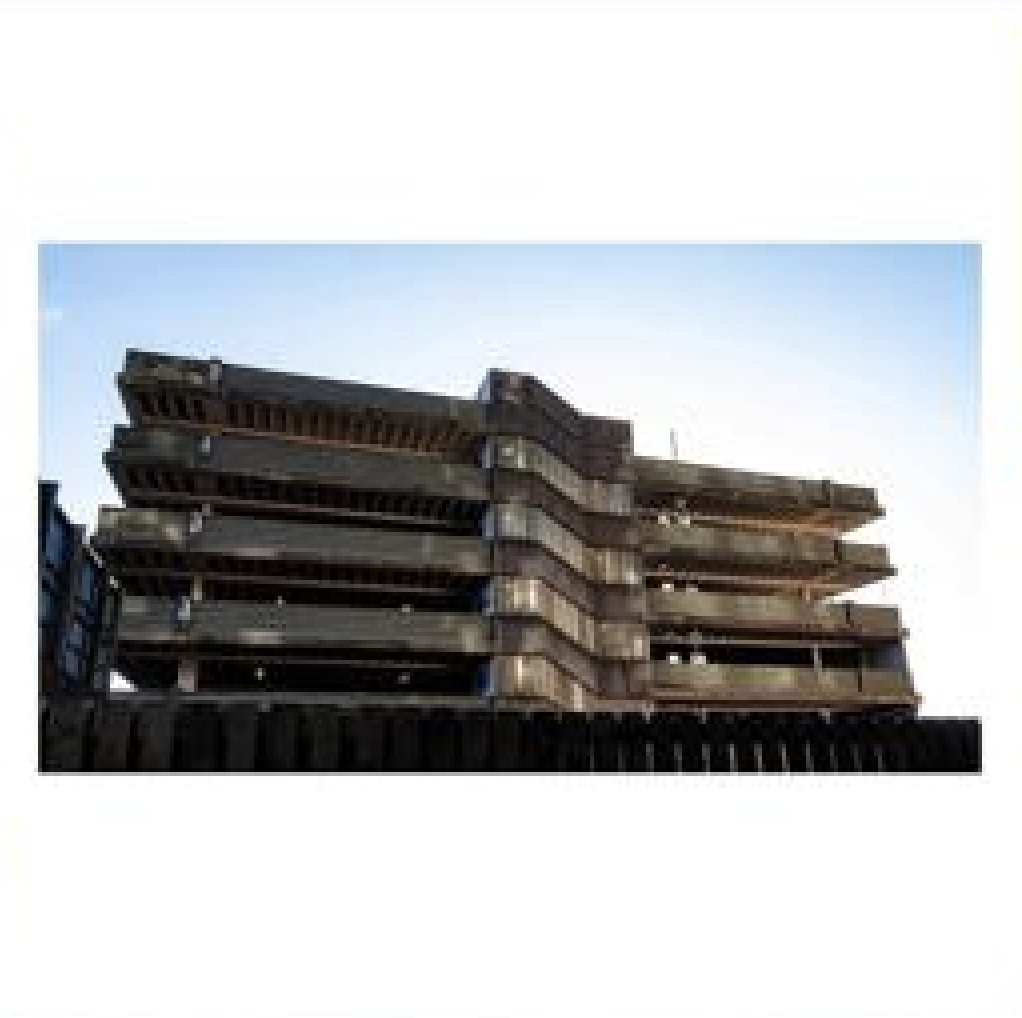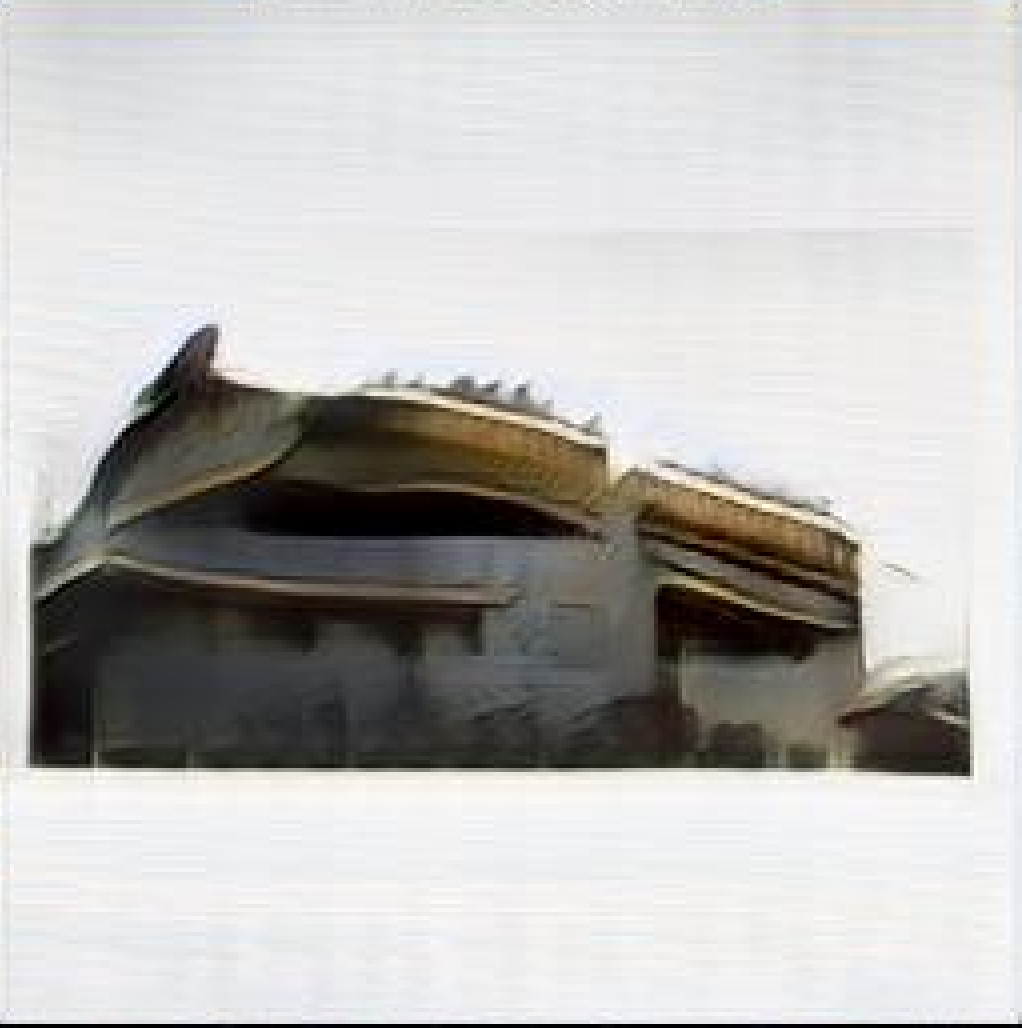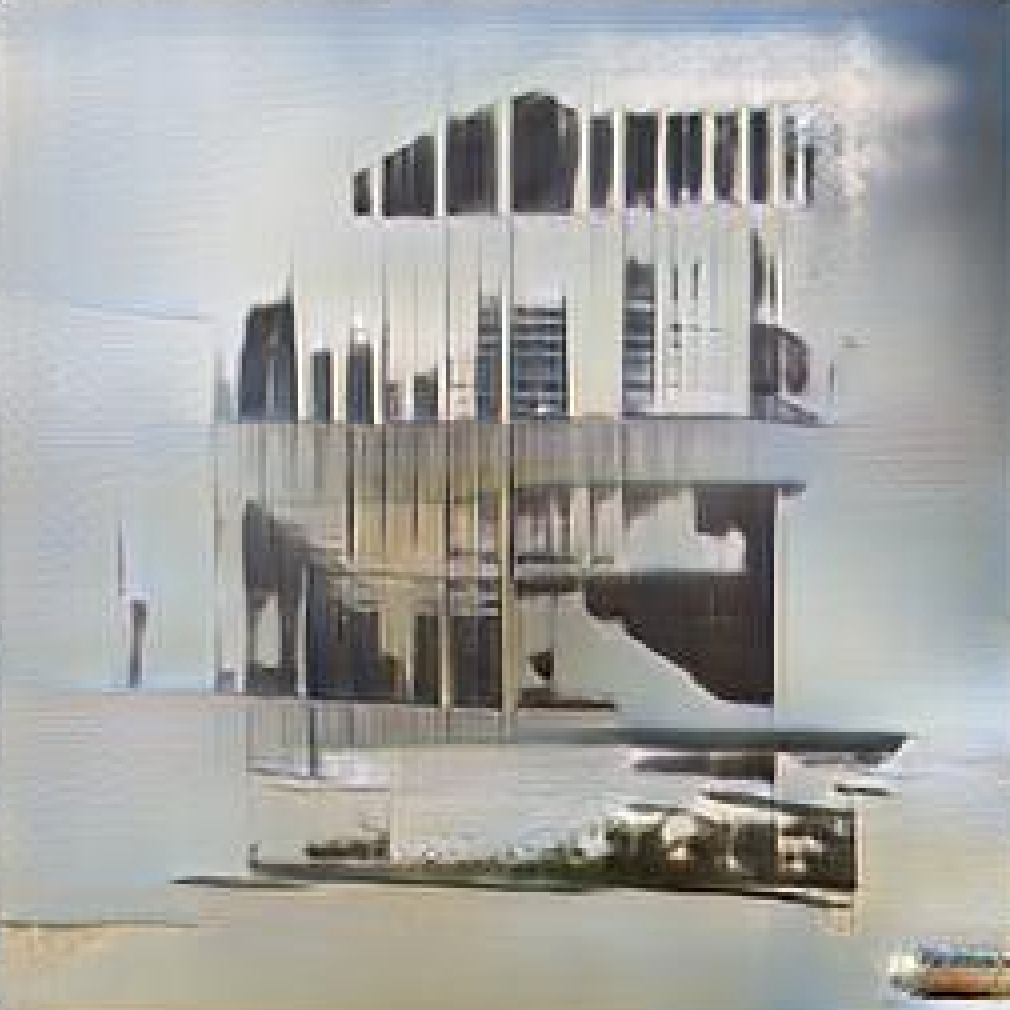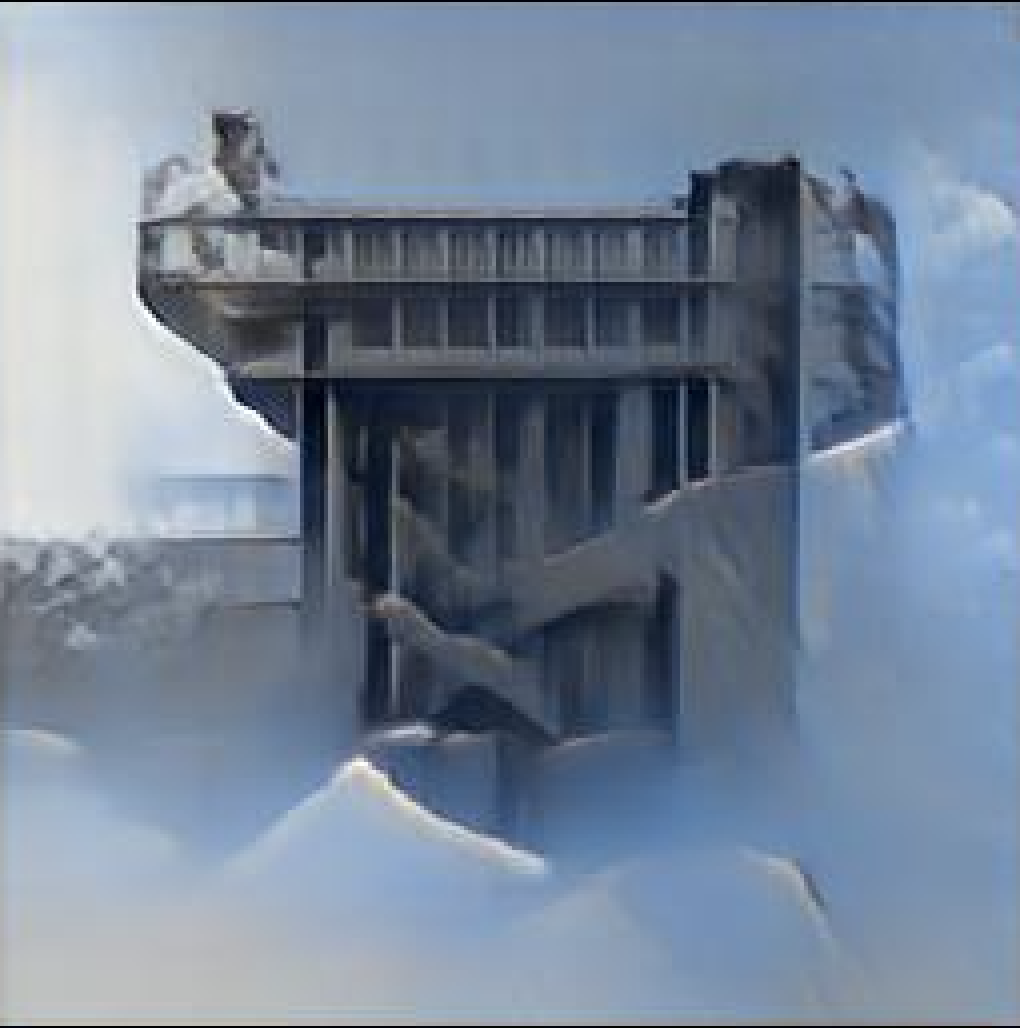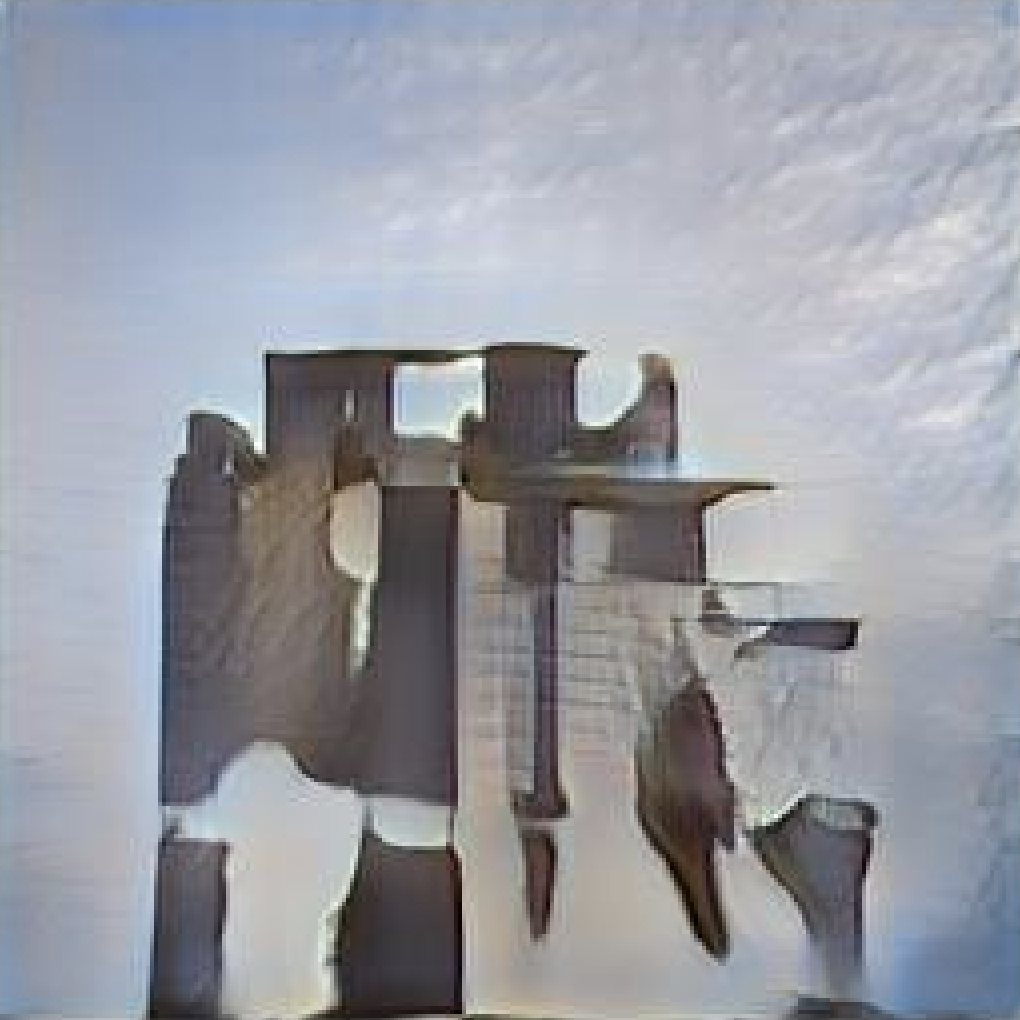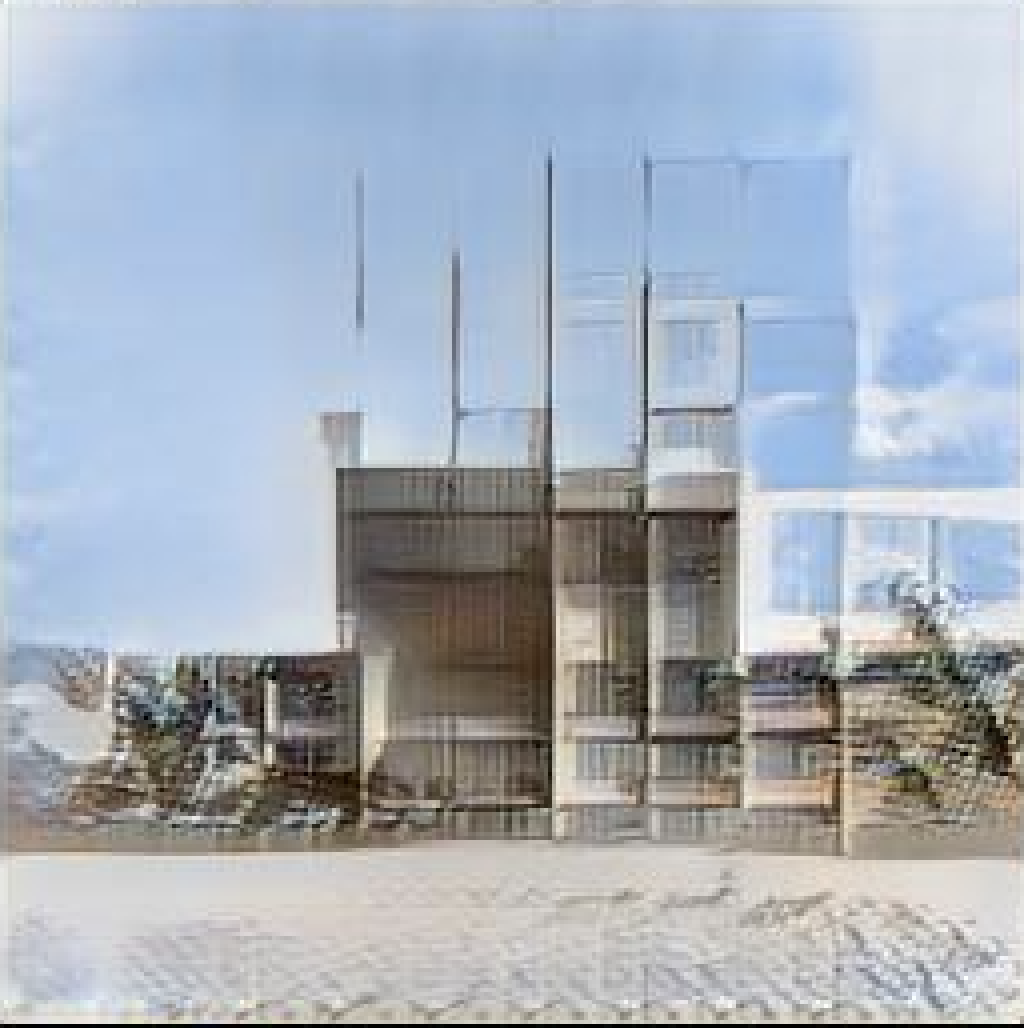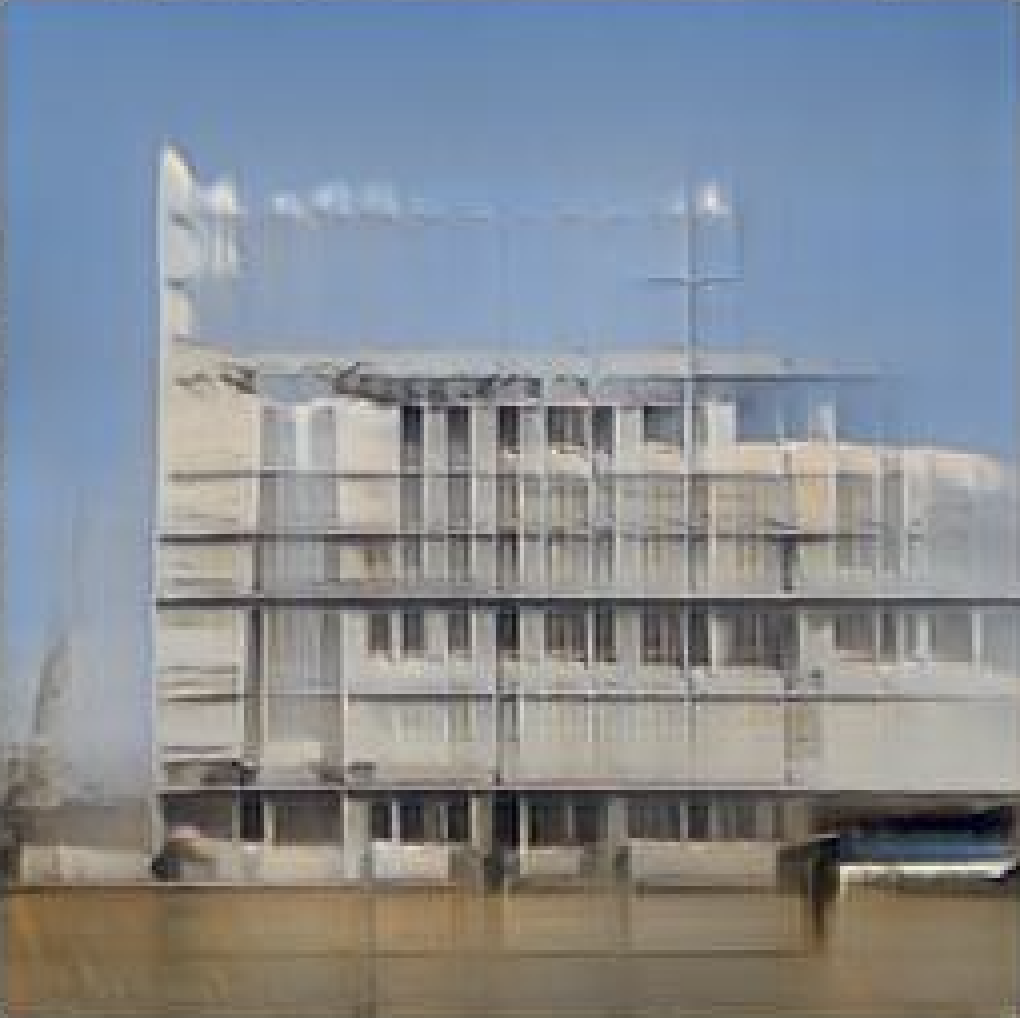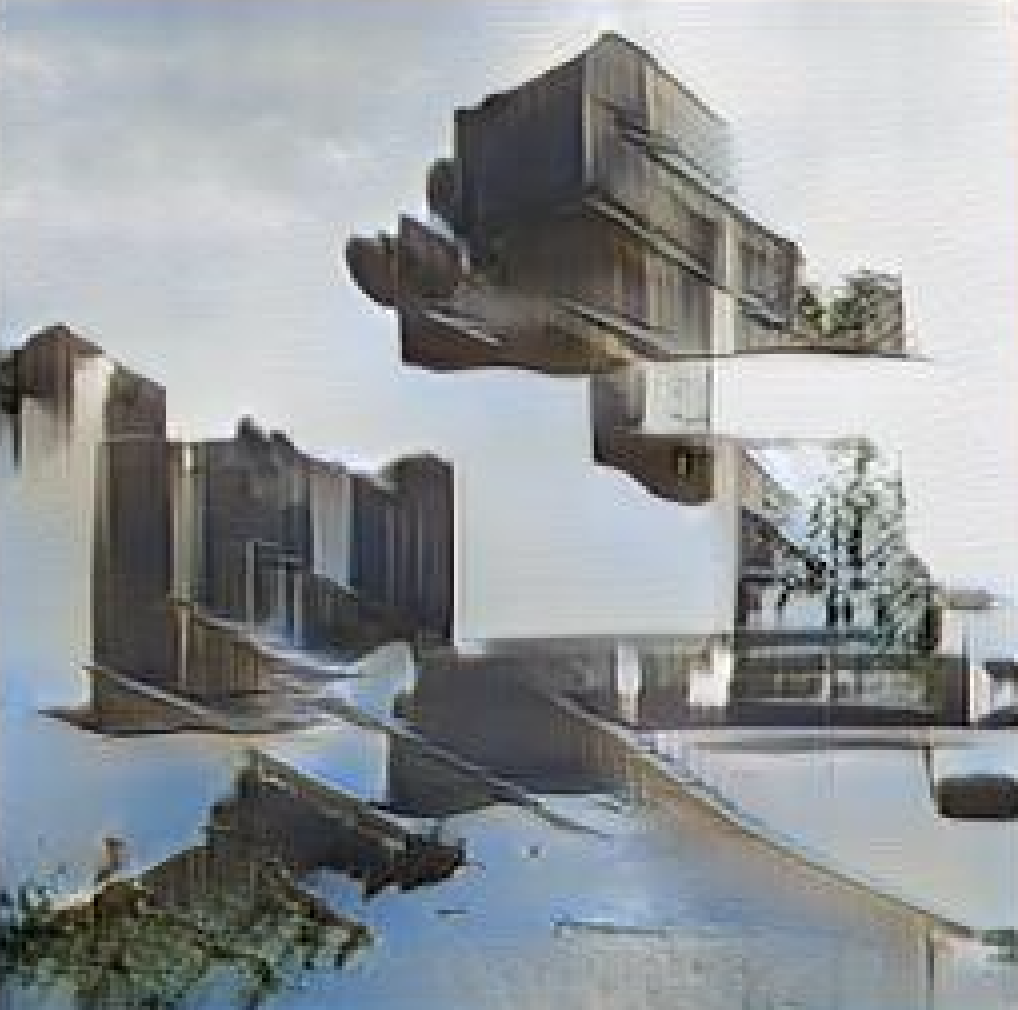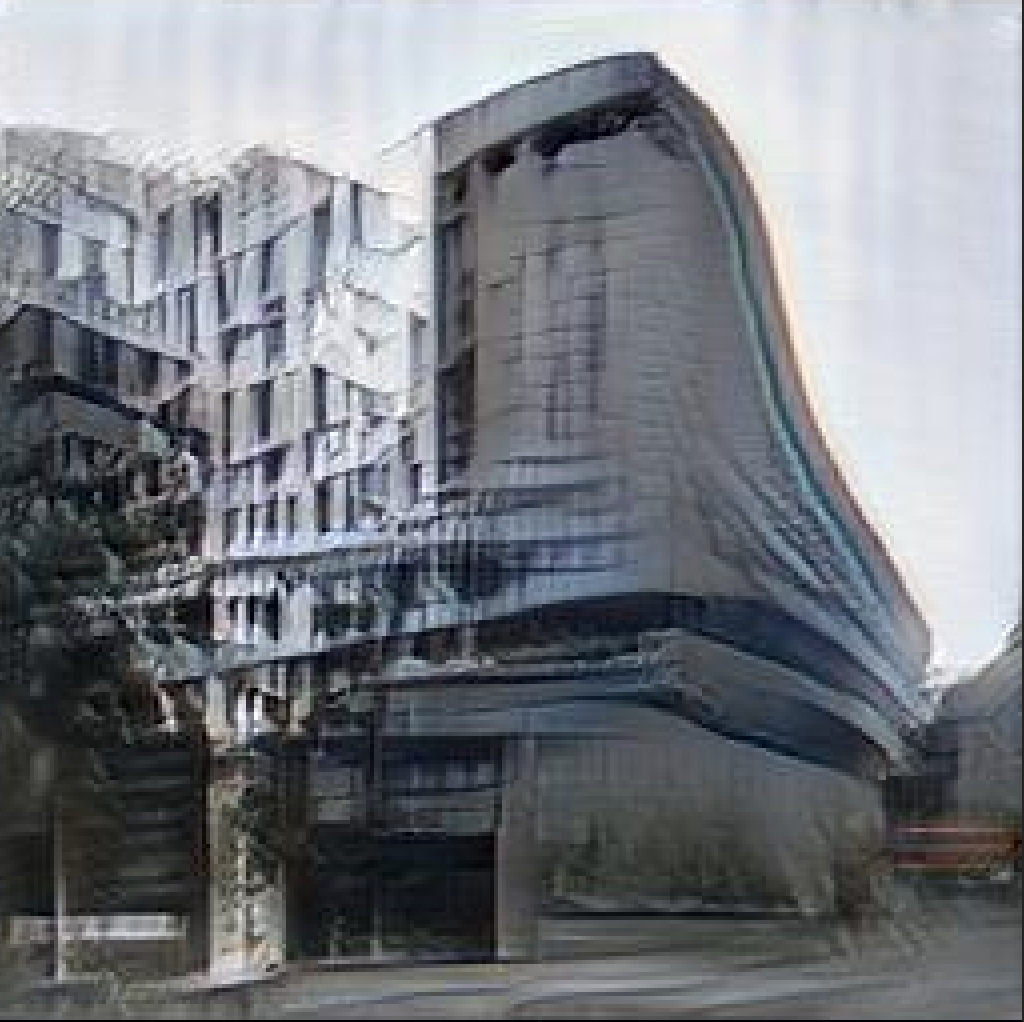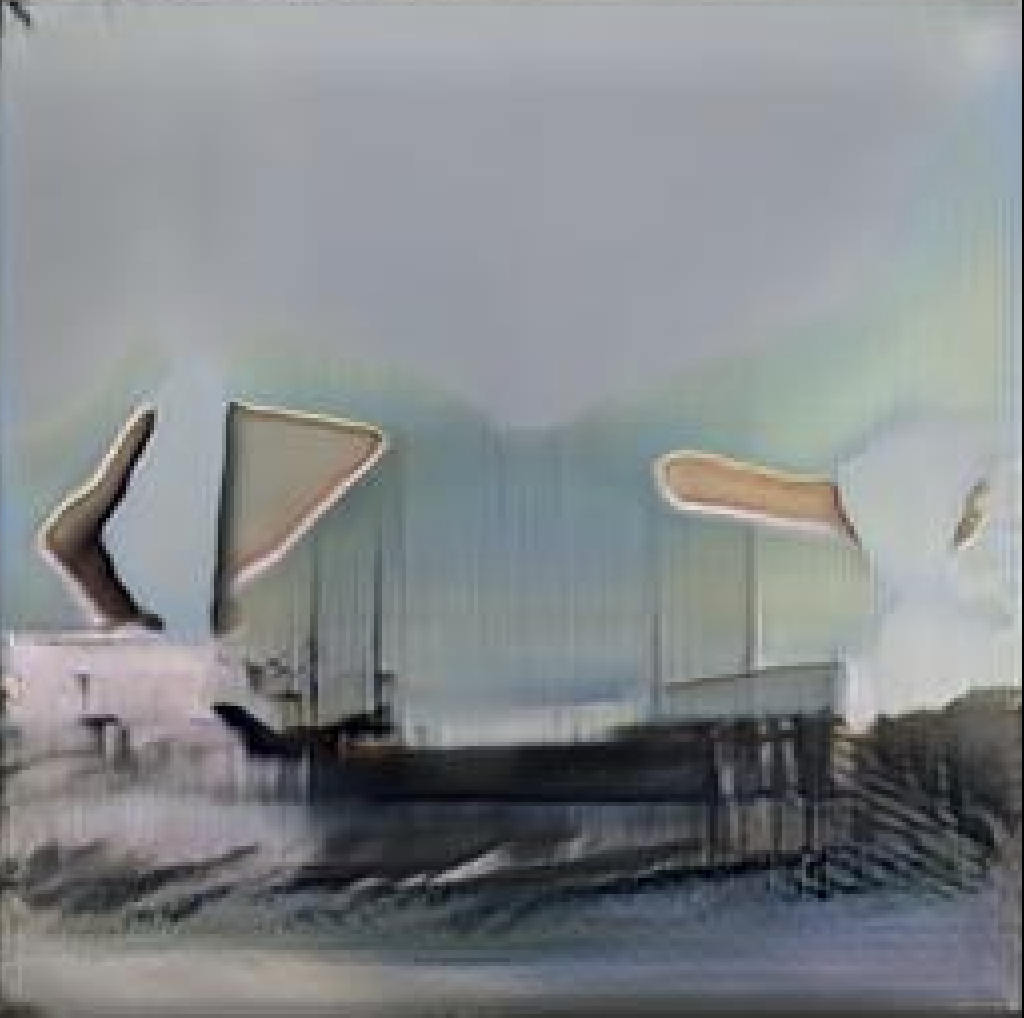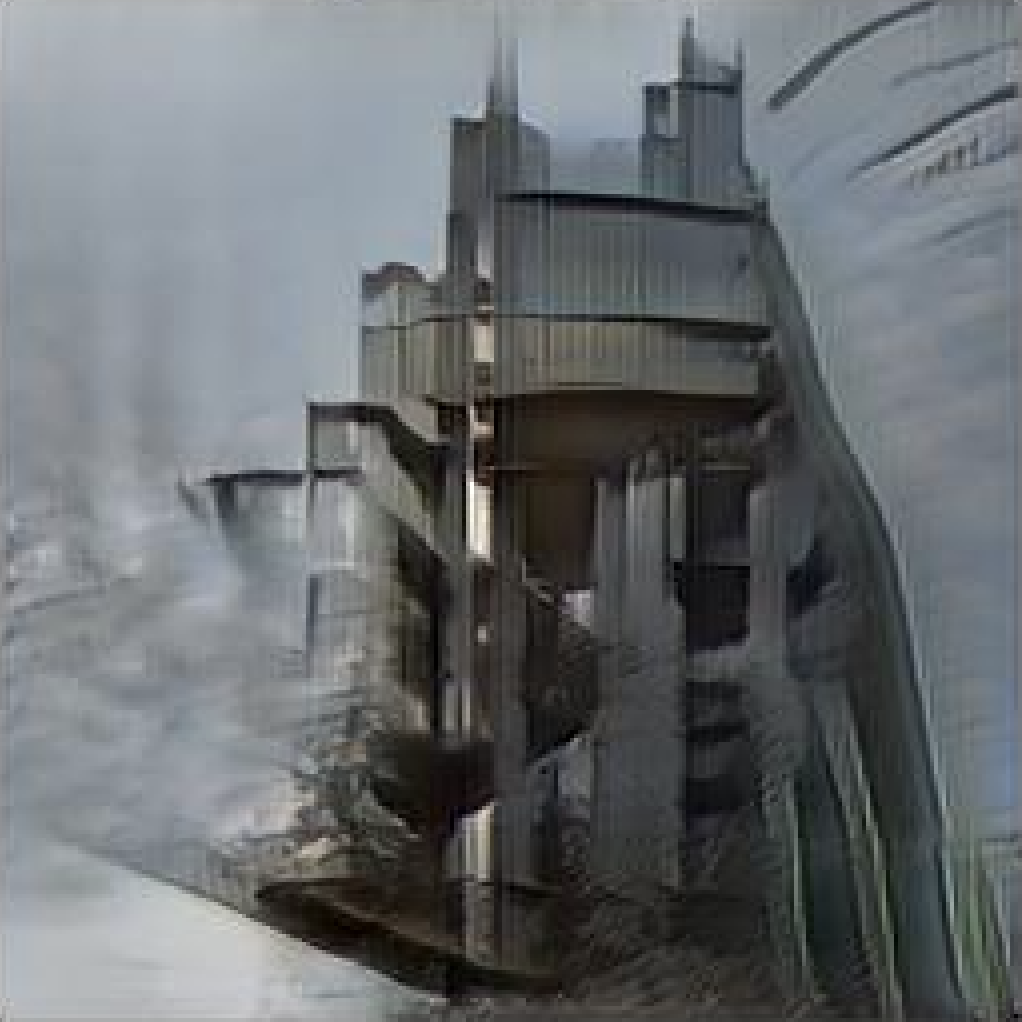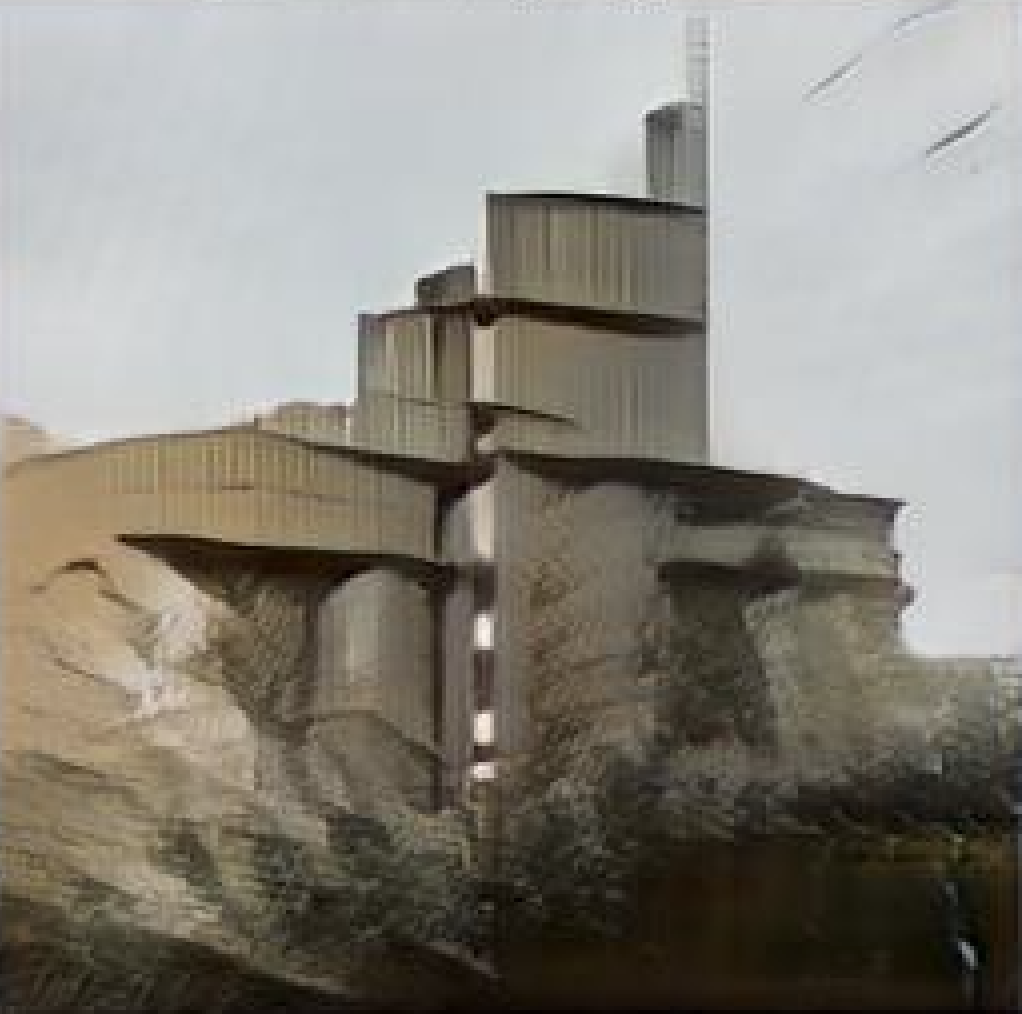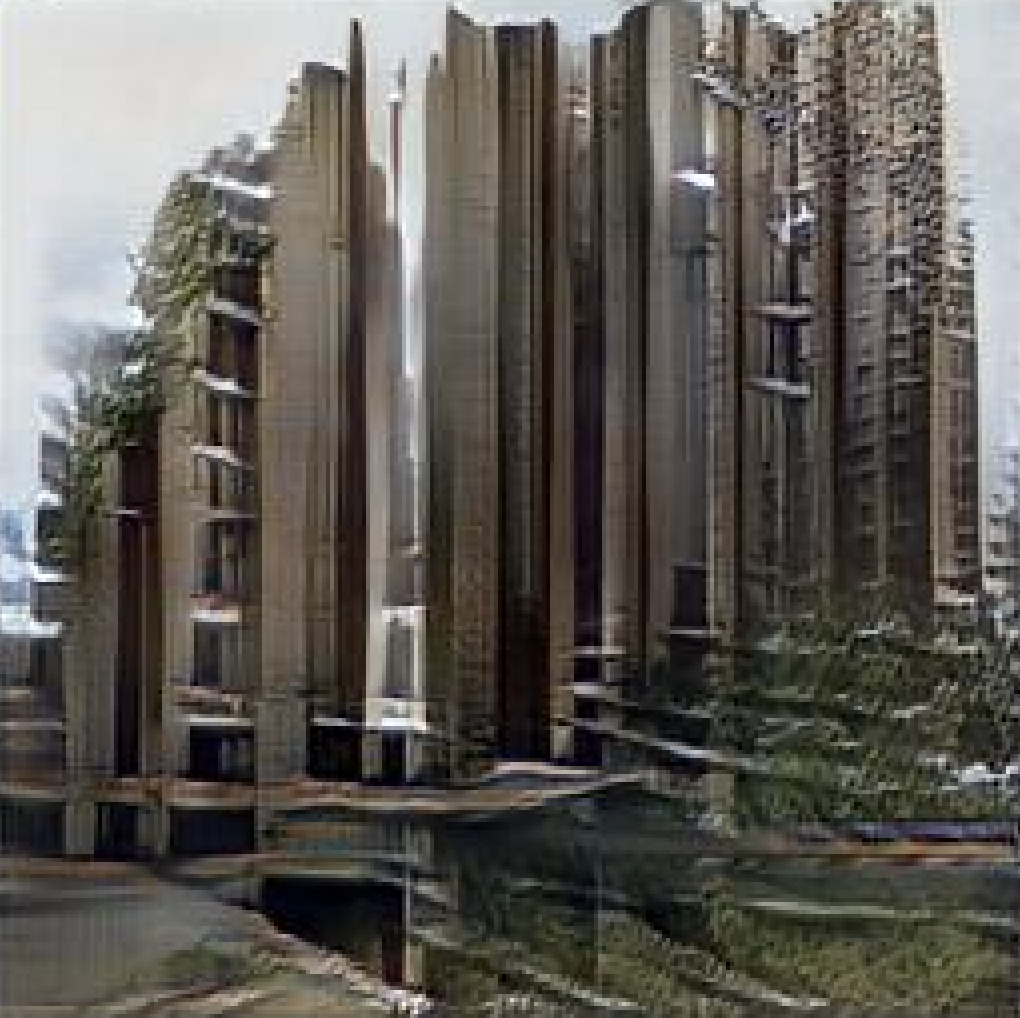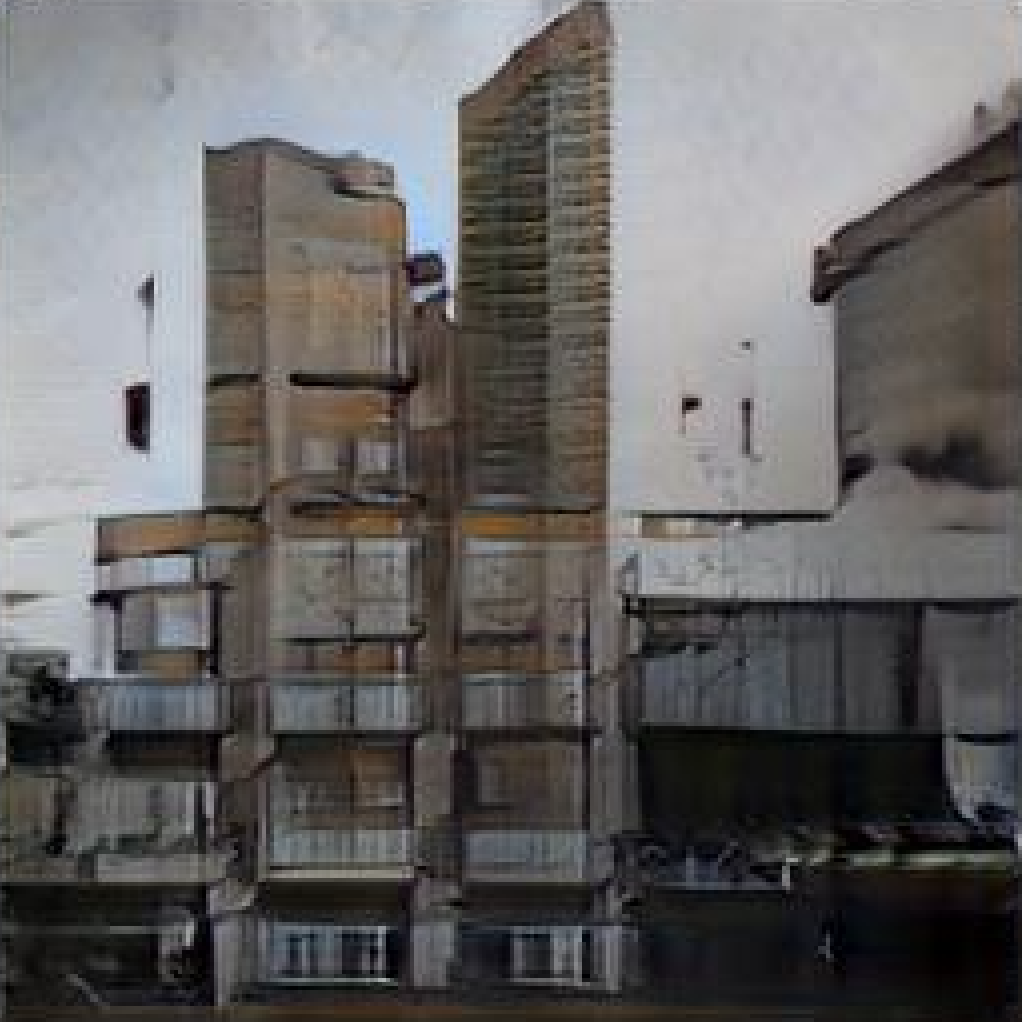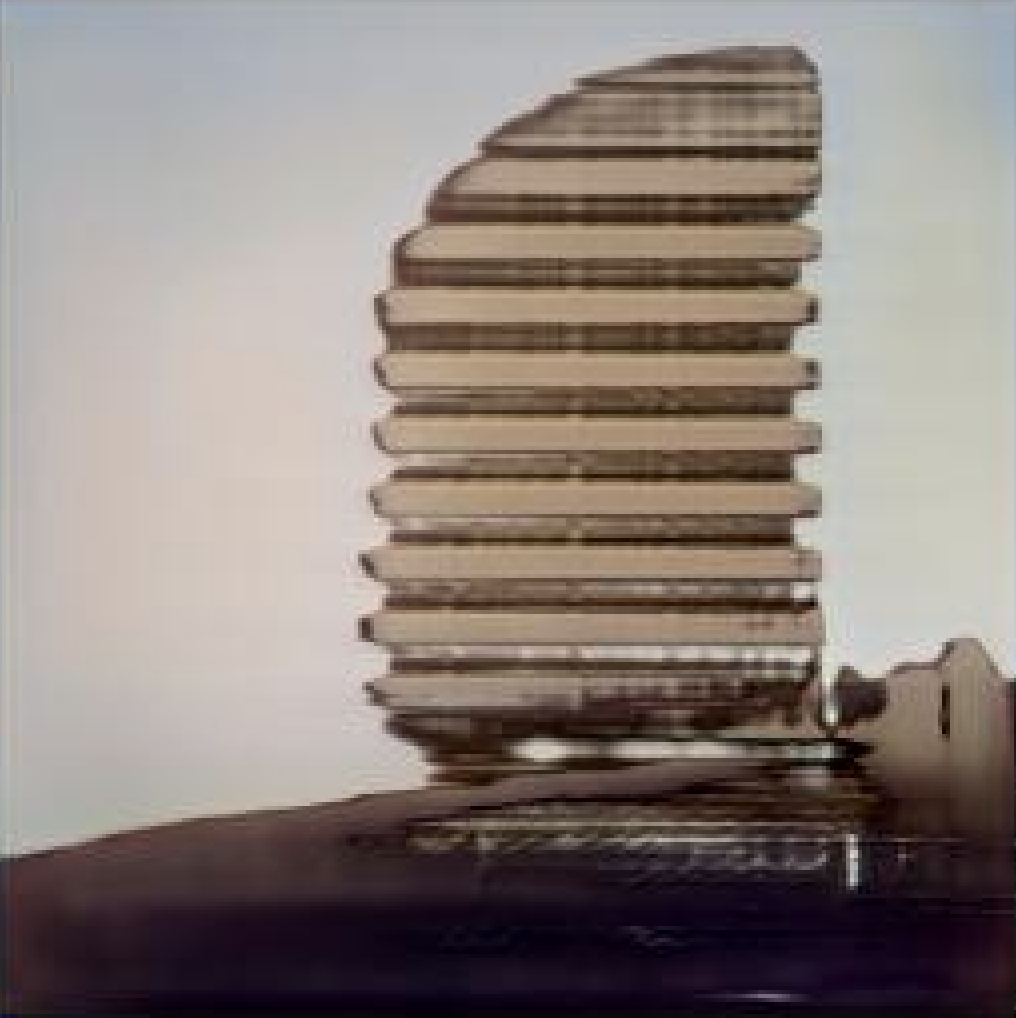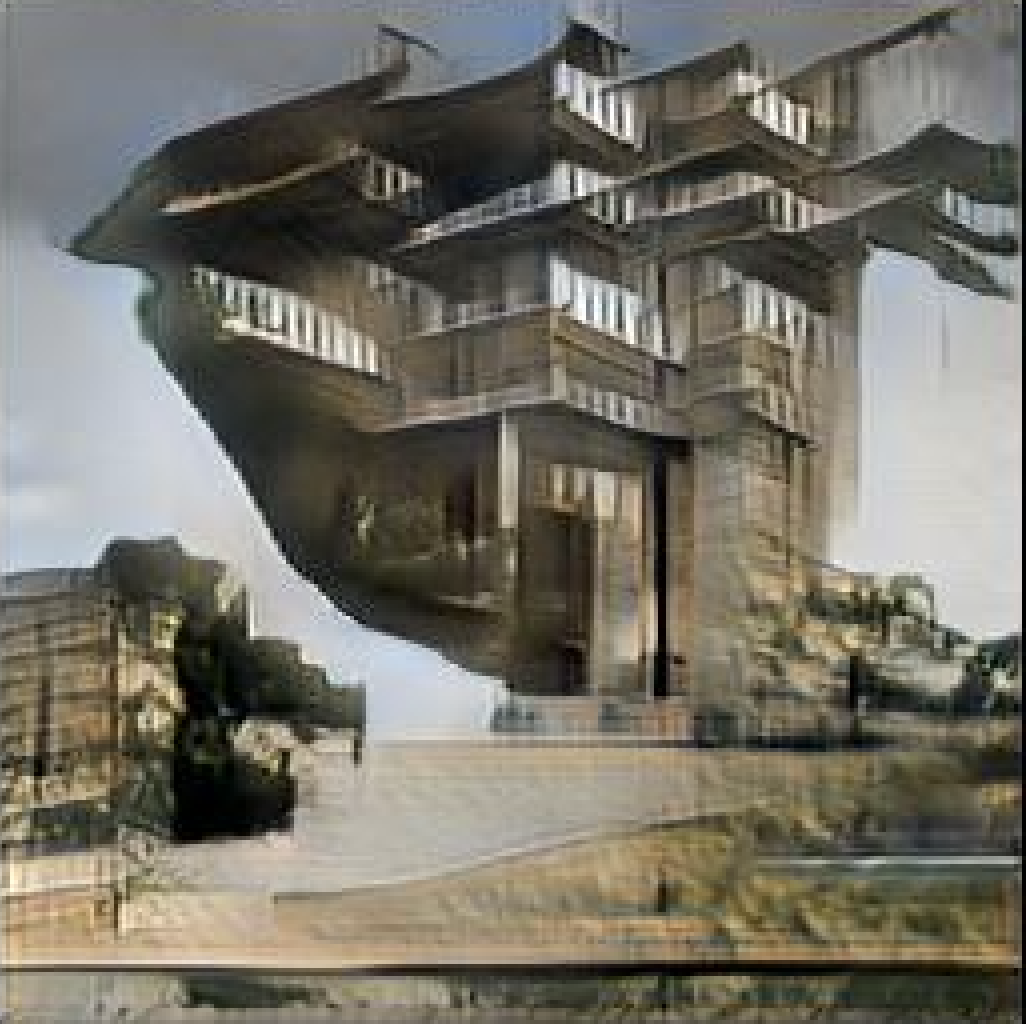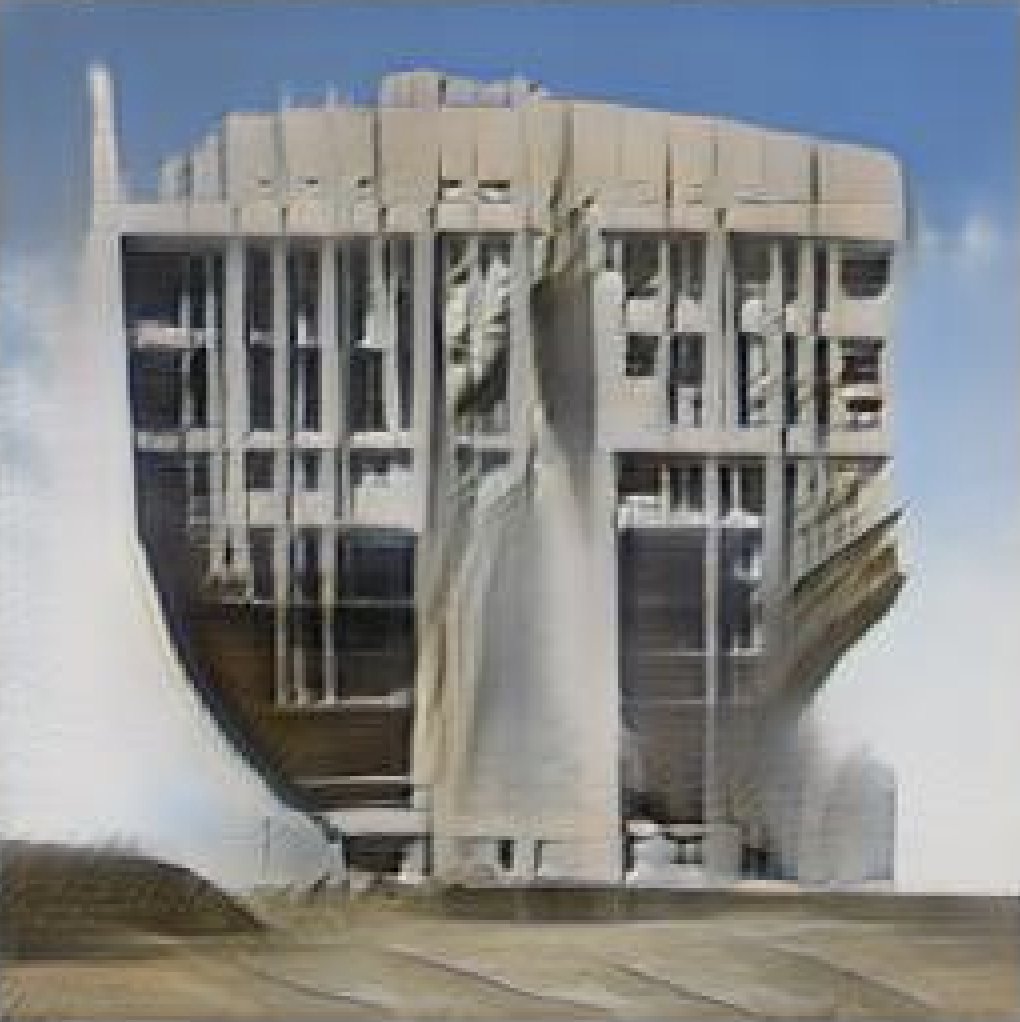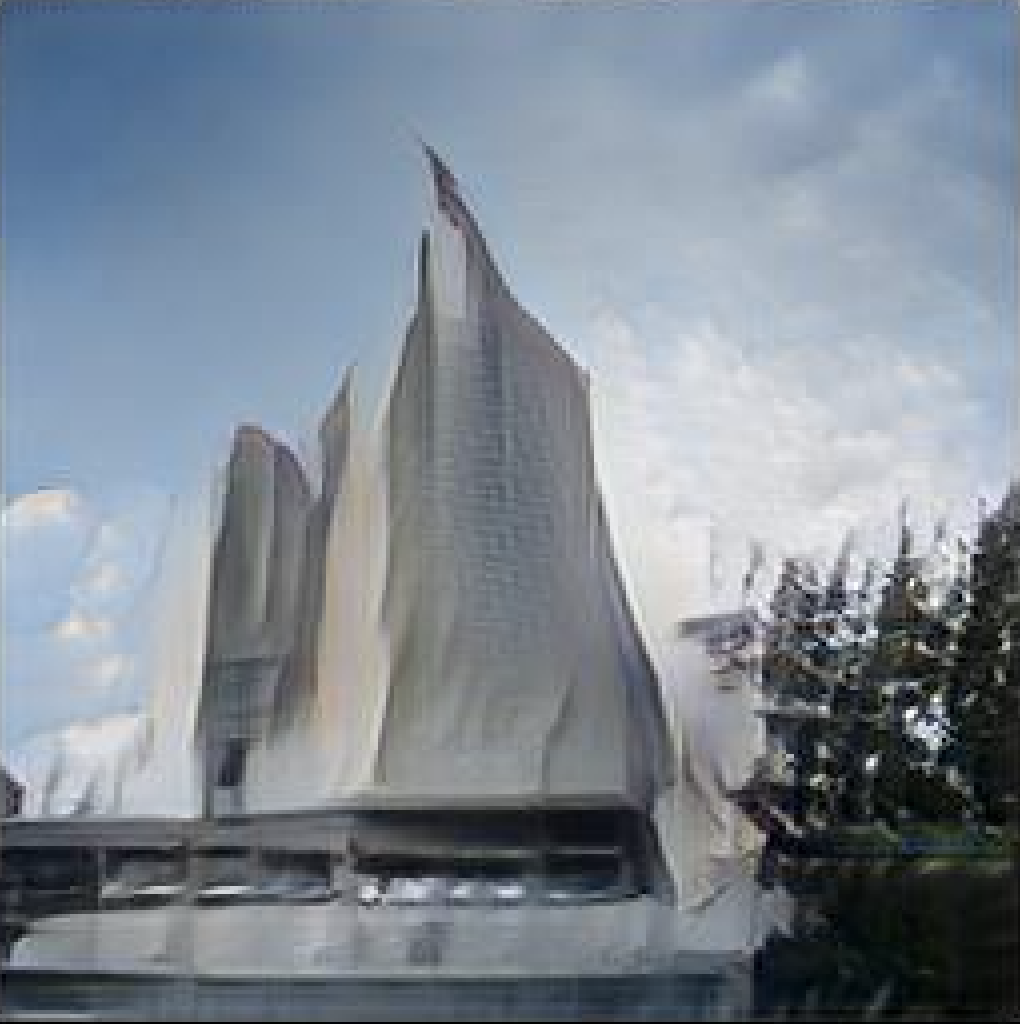Mass Transfer // Exploring the Latent Space of Brutalist Architecture
year: 2020type: research Mass Transfer uses deep neural network algorithms to explore the foundational visual patterns, geometries, and textures that underpin the distinct aesthetic of Brutalist style architecture. By training our algorithm on a custom dataset of 49,763 original images of Brutalist buildings, we were able to synthesize images of “fake” buildings that shared similar features. However, unlike our finite dataset, our algorithm has the ability to synthesize an infinite number of “designs”, each unique in its own way.
Goal
The primary aim of this study is to visually explore the broad range of synthesized images and to understand what Brutalist features have been identified, quantified, and reproduced by our algorithm. By carefully studying the composition of each output image, clusters of similarly-styled images begin to emerge highlighted by specific geometric organizations, repeating volumes, similar colours, particular textures, and related image compositions. Such a clustering exercise allows us to dismantle the Brutalist style into its main aesthetic components, thus revealing what it means for a building to be “Brutalist”.
The benefit of using deep learning algorithms is its ability to analyze and cluster tends of thousands of images at once. Thus, large corpuses of architectural imagery can be analyzed, quantified, and sorted into groups of visually similar features at a rapid pace. When applied to a certain aesthetic, we can quickly identify how the style is represented, both in terms of its defining features (color, composition, gesture, organization, and so on) and its overall image composition (lighting condition, photo angle, surrounding context, etc). In addition, algorithms can also help identify new, and previously unrecognized sub-styles within larger style-groups or new relationships between styles or seemingly disparate aesthetic classes. Though the topic of aesthetic has been universally studied, analyzed and explored to extraordinary depths, algorithmic approaches provide us with powerful new tools to discover novel phenomena, relationships, and insight across entire corpuses of work and millions of images, thus providing a new landscape for discovery and knowledge creation.
Sub-style Iterations
Wide, curving and wrapping bands (top row)
Bleak and imposing multi-story tower on a 3 storey podium (middle row)
Inviting entry with covered portico and infiltrating vegetation (bottom row)
Extracting the Brutalist Style
The image clusters below represent the most dominant styles produced by our image synthesis algorithm. They illustrate how the brutalist style, though clearly defined and recognizable, can be broken down into multiple categories defined by colour, height, type, geometric organization, composition, and so on. As a result, the true diversity of Brutalism is illustrated. In addition to clustering, we have also shown how our algorithm can “play” or iterate upon these features by creating multiple variations of certain styled image, thus, illustrating how particular features or combinations of features can be targeted and reproduced in multiple new ways. Such “targeting” can hypothetically suggest new design methodologies where features can be directly and rapidly manipulated, locked-in, and iterated upon by a designer. Thus, a designers ability to produce design options may be greatly augmented through algorithmically accelerated rapid-prototyping methods, design-option exploration, and the ability to output high fidelity renderings earlier on in the design process.
Tower Cluster
Multi-storey massing
Heavy & exposed structural elements
Double height bases
Strong vertical and horizontal concrete banding
Strict window grids
Sub-style Iterations 2
Aggregated concrete window clusters with sunset lighting conditions (top row)
Fluid lines and light weight glass mixed with heavy concrete elements (middle row)
Dread inducing aesethic with clear material decay and vegetative overgrowth (bottom row)
Pastel Cluster
Muted color palette
soft lighting
simple geometric design
minimal detailing
flat, planar walls & massing
cropped imagery
Facade Cluster
Repeating window patterns // Emphasized horizontal elements // exposed structural elements // geometric rhythm
Extracting Massing & Perspectives
Interesting examples of how image composition is learned and adapted for use in new image synthesis generations.
As clear with these images, IntroVAE’s have the ability to adopt and mix different learned features from the image dataset within a single image.
In the top left example, our algorithm applied the original images overall perspective and massing shape but overlaid and applied a completely different architectural geometry texture / patterns on top. Such recombinations may soon give rise to the architectural “remix” culture where styles can be broken down, pulled apart, and recombined in new and novel ways.
The Architectural Remix
The images to the right highlight the potential results of a future architectural “remix” culture, where elements from different images can be targeted, pulled apart and recombined.
The first two images on the left are original images in the dataset which have been combined to produce the synthesized image on the right.
This new synthesized image clearly embodies elements from both original images. For example, the general massing organization and colouring of centre photo, and the upward curbing elements of the first.
In-Between Spaces
Latent space exploration can also reveal interesting in-between moments that decentralize any notion of anthropocentric occupation or use. Instead suggesting occupiable space, output exists entirely within an algorithmic in-betweenness, where synthesized results satisfy some but not all of the requirements of what is commonly associated with being “architectural” imagery. Though uncanny, these outlying conditions may help or suggest new aesthetic conditions or styles that are founded on existing architectural rules but are interpreted and represented in novel ways.
Outliers
In addition to clearly defined and recognizable style clusters, our algorithm also synthesized images that fell well outside of these groups. These outputs, which seems to fall halfway between possible and impossible represent some of the more exciting aesthetic directions that algorithmic generative design may begin to suggest. Again, all of the below images are the result of extracting and mixing the existing patterns of information found within architectural imagery. Thus, new synthesized forms are both built upon the existing language of Brutalist architecture, and an expansion upon this existing language in new ways through “style remixing”, recombinations, and new algorithmically induced interpretations.

